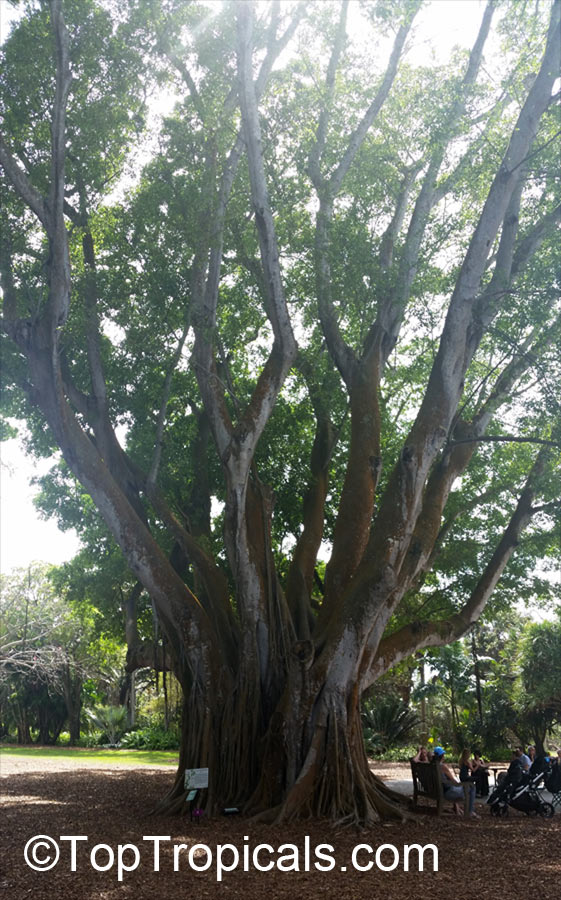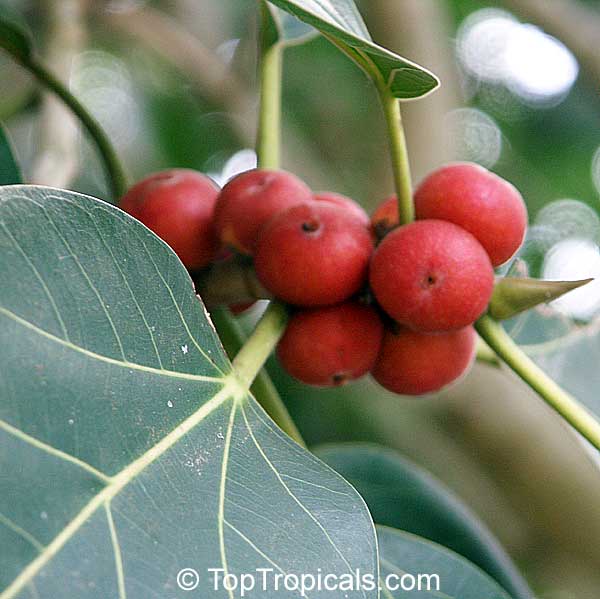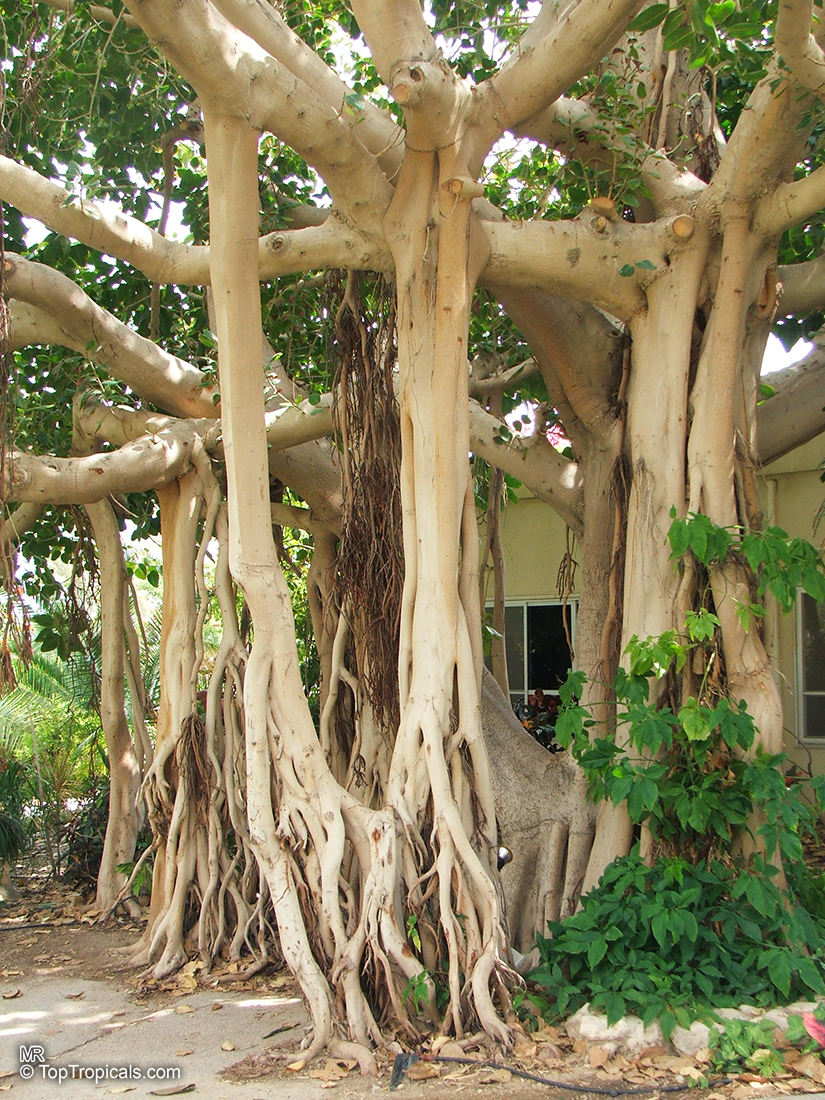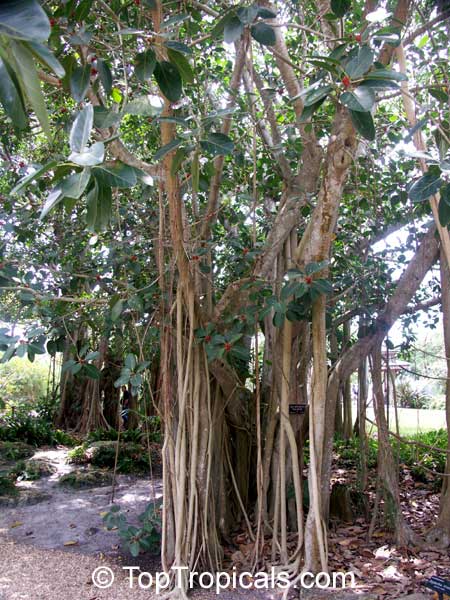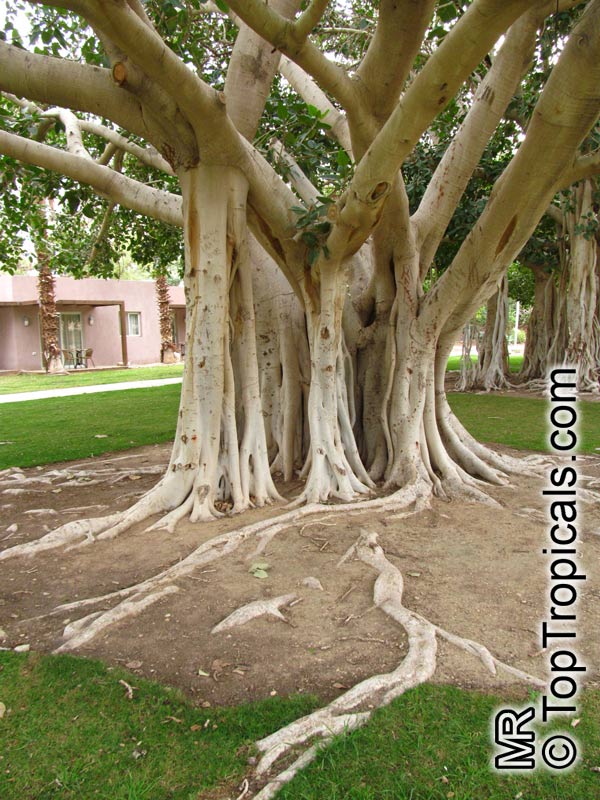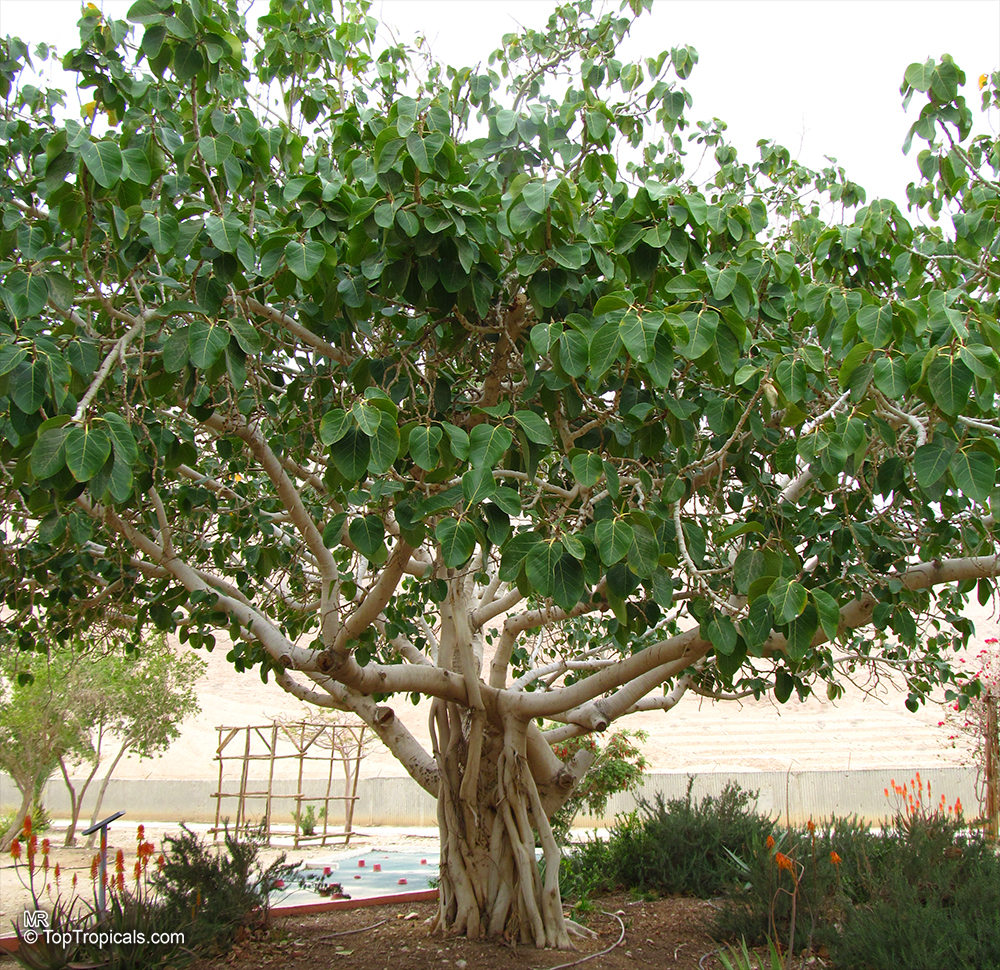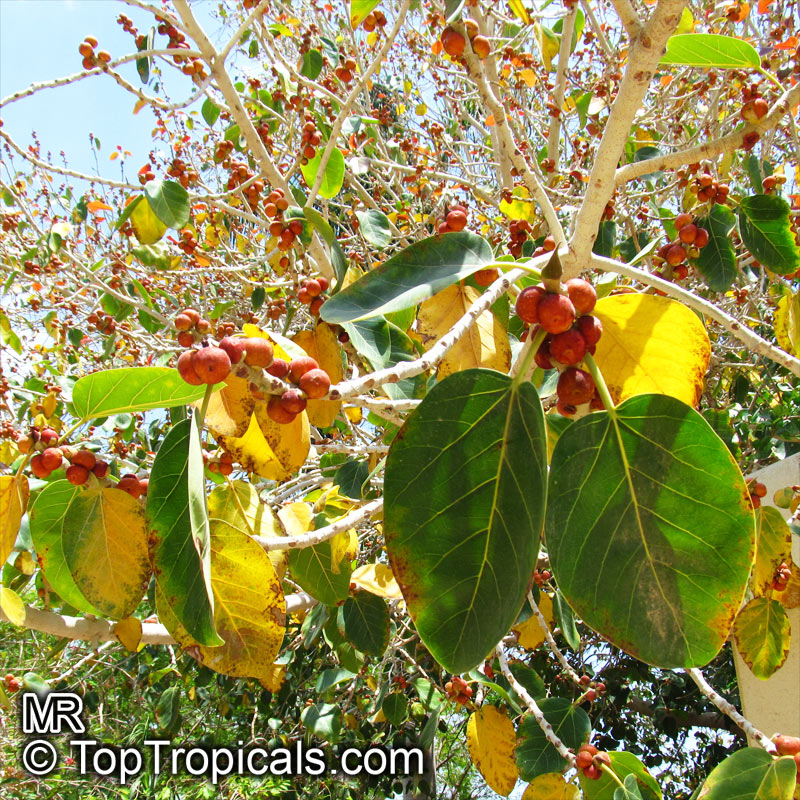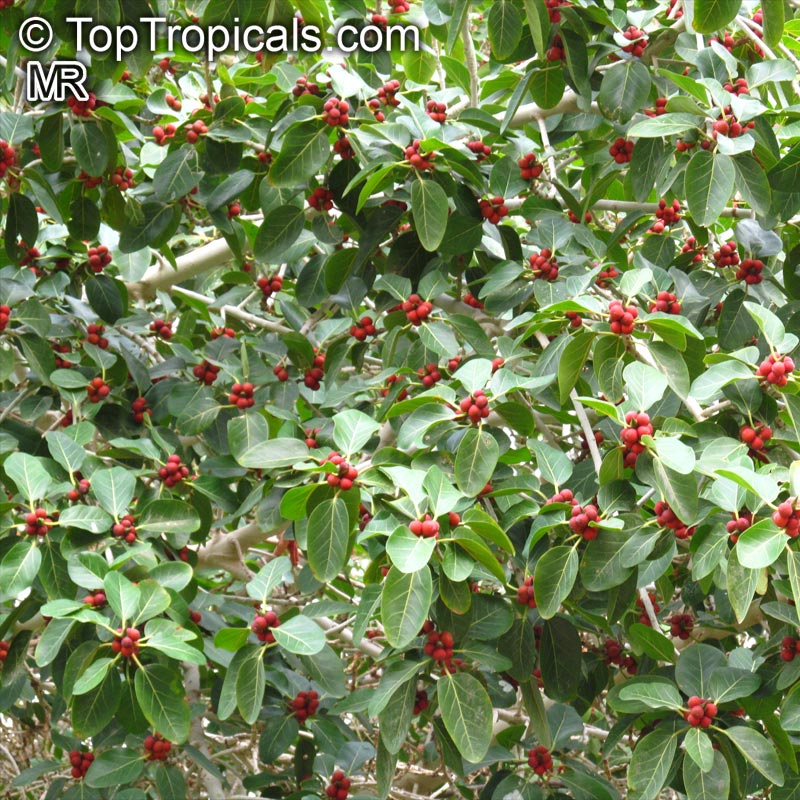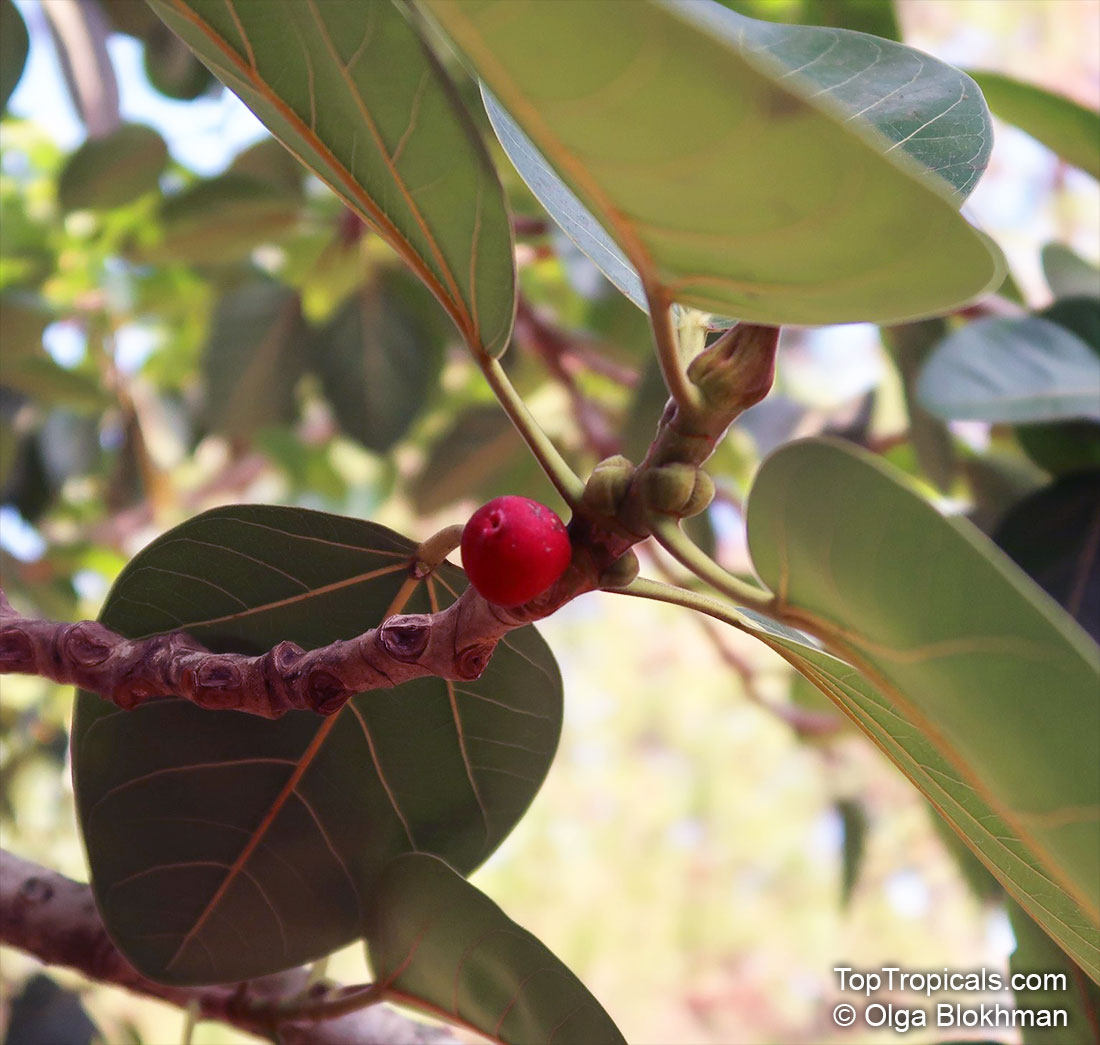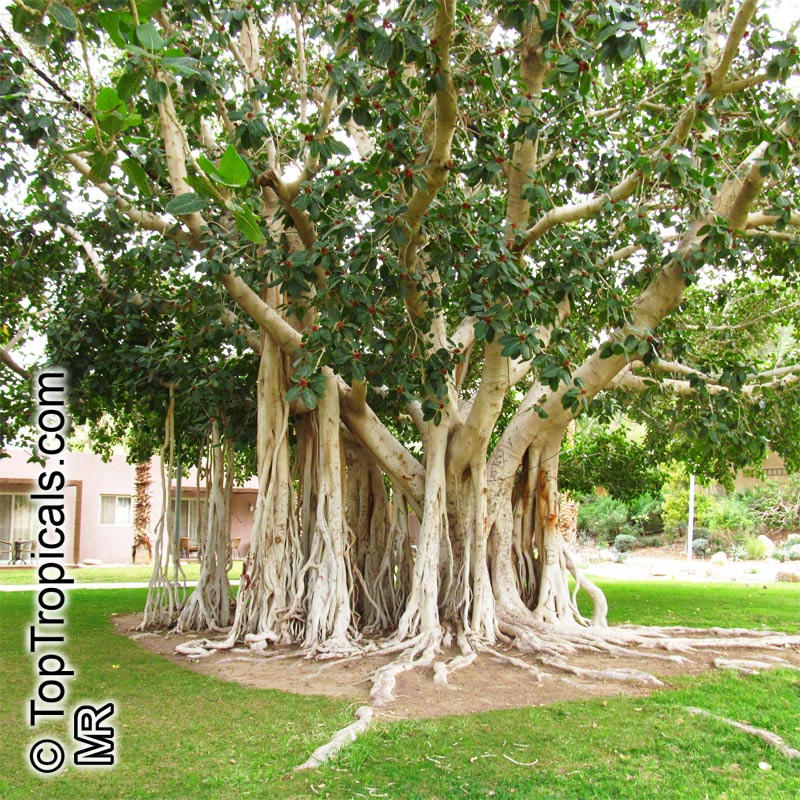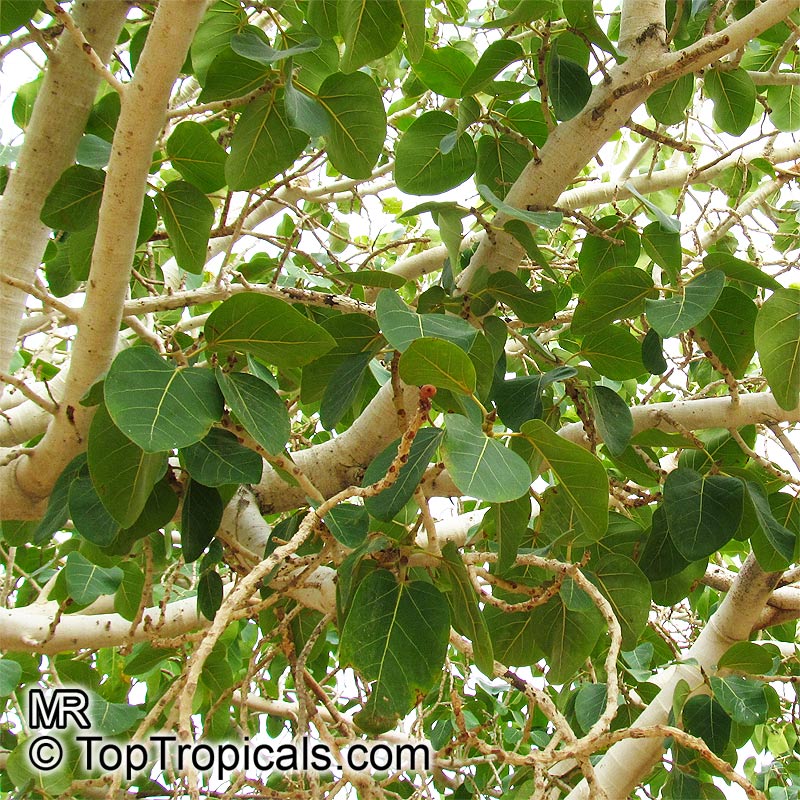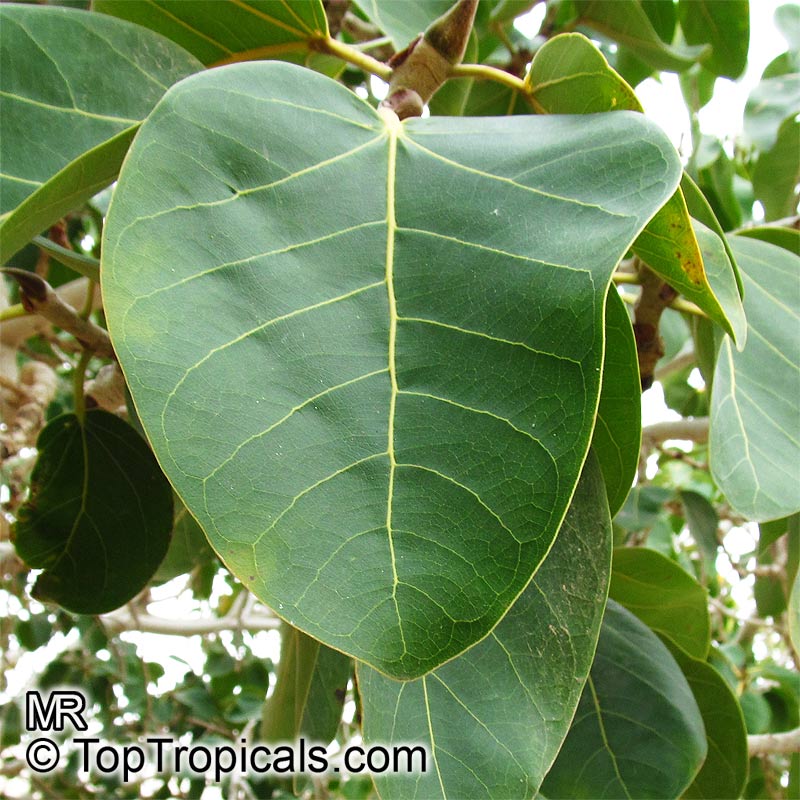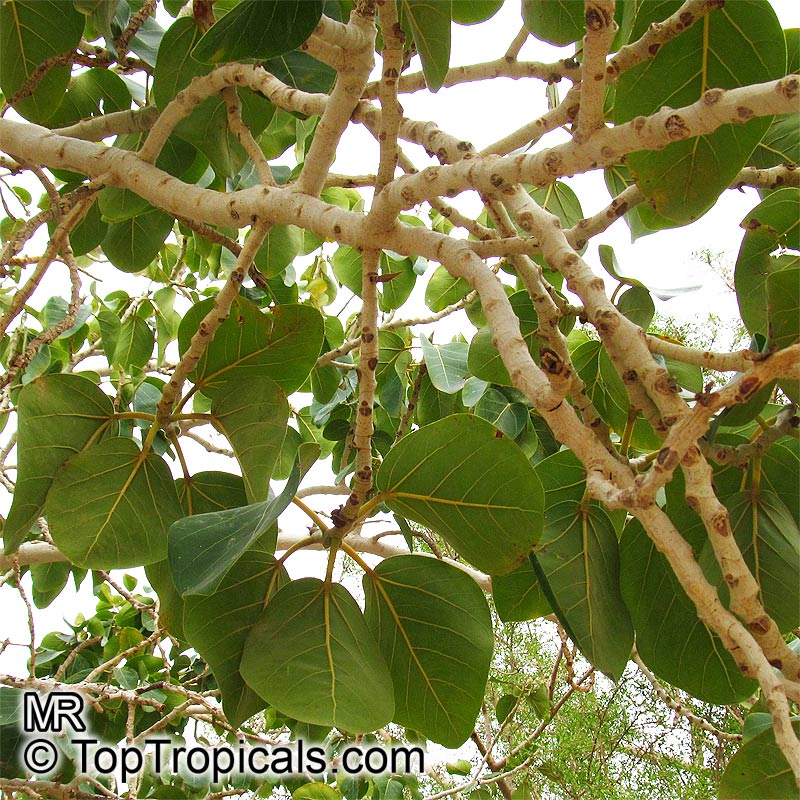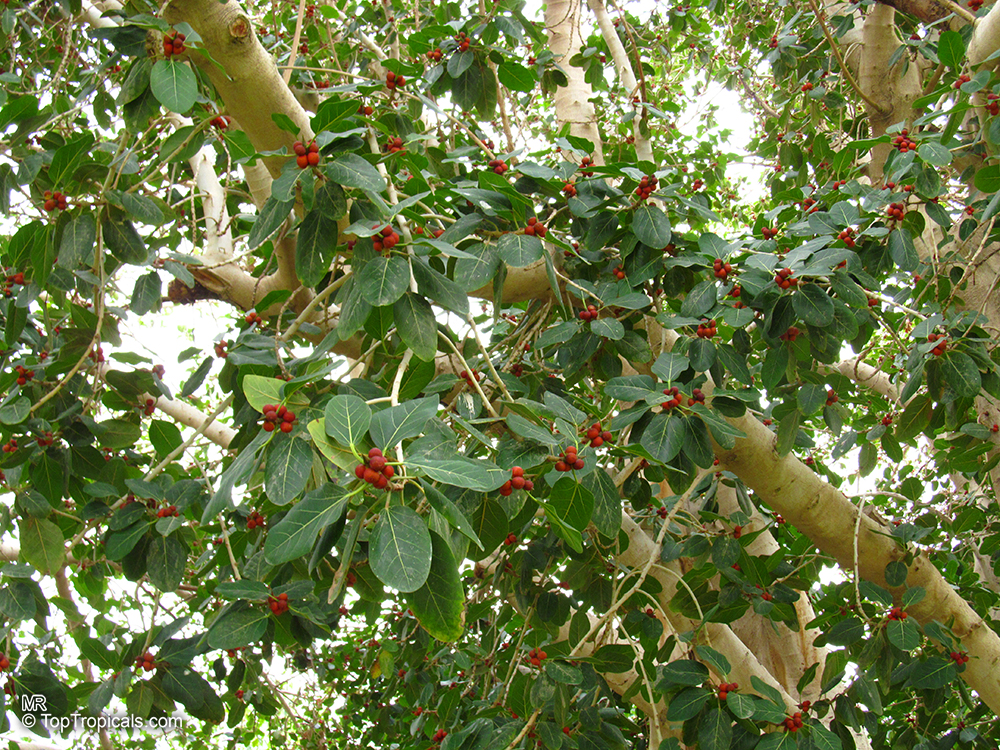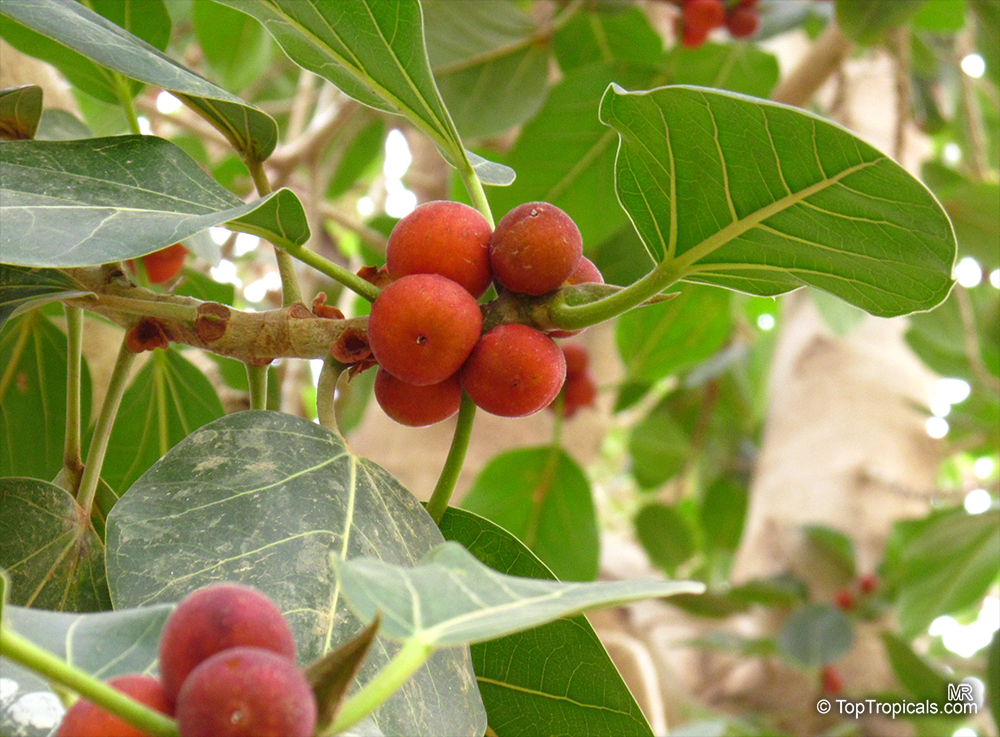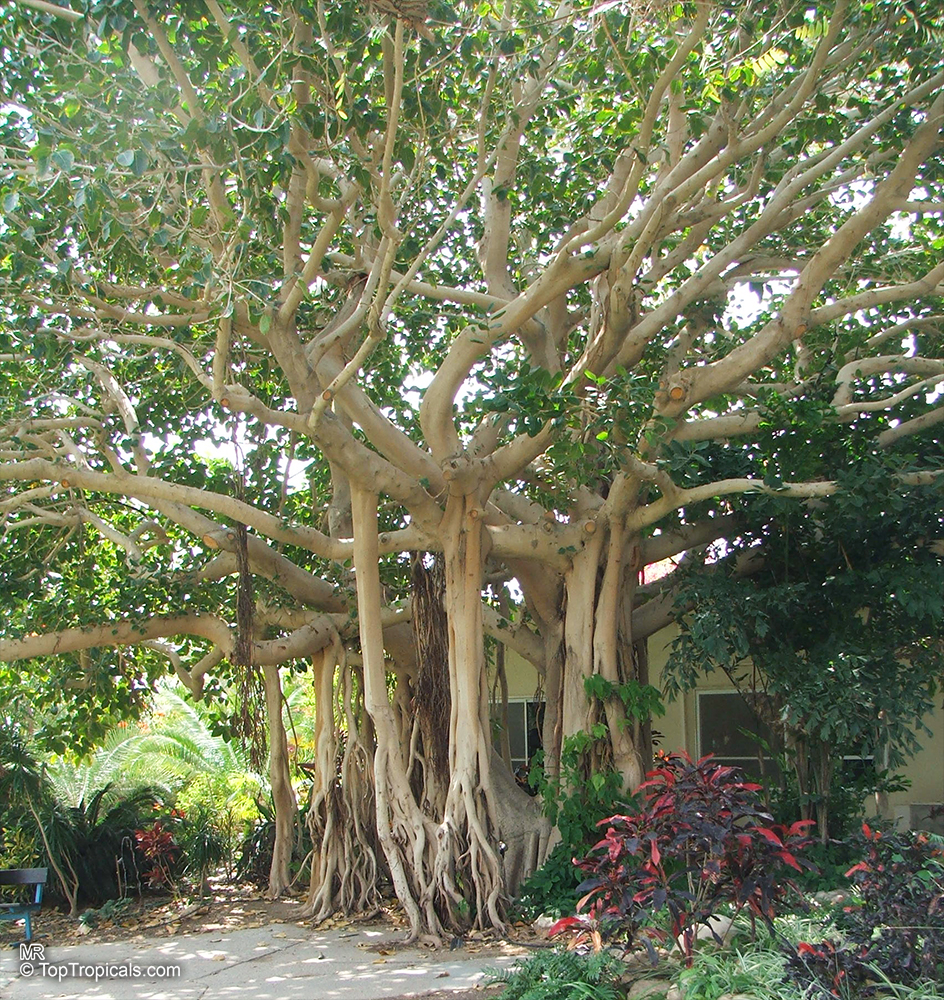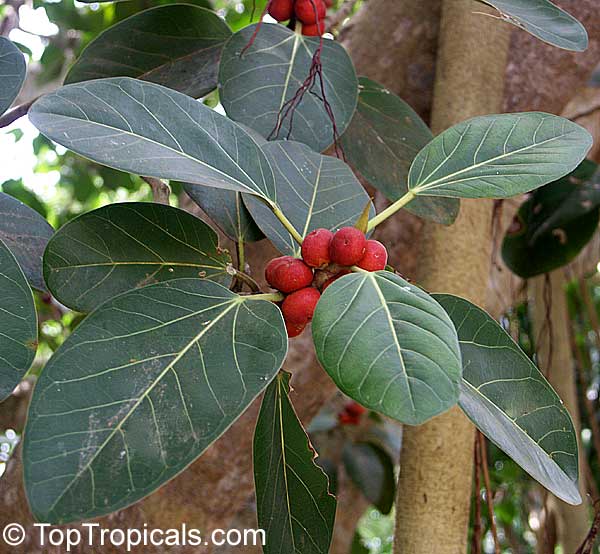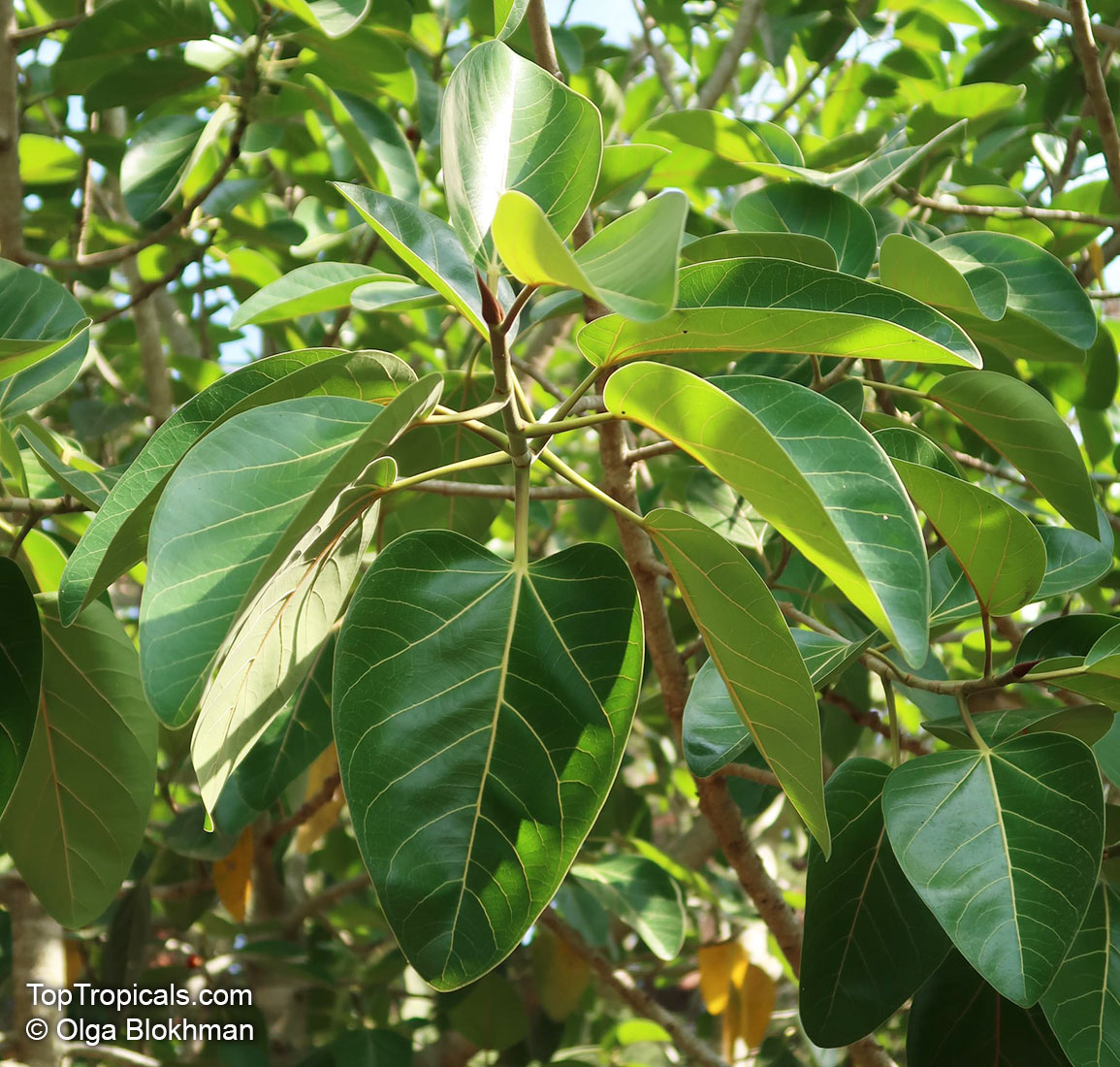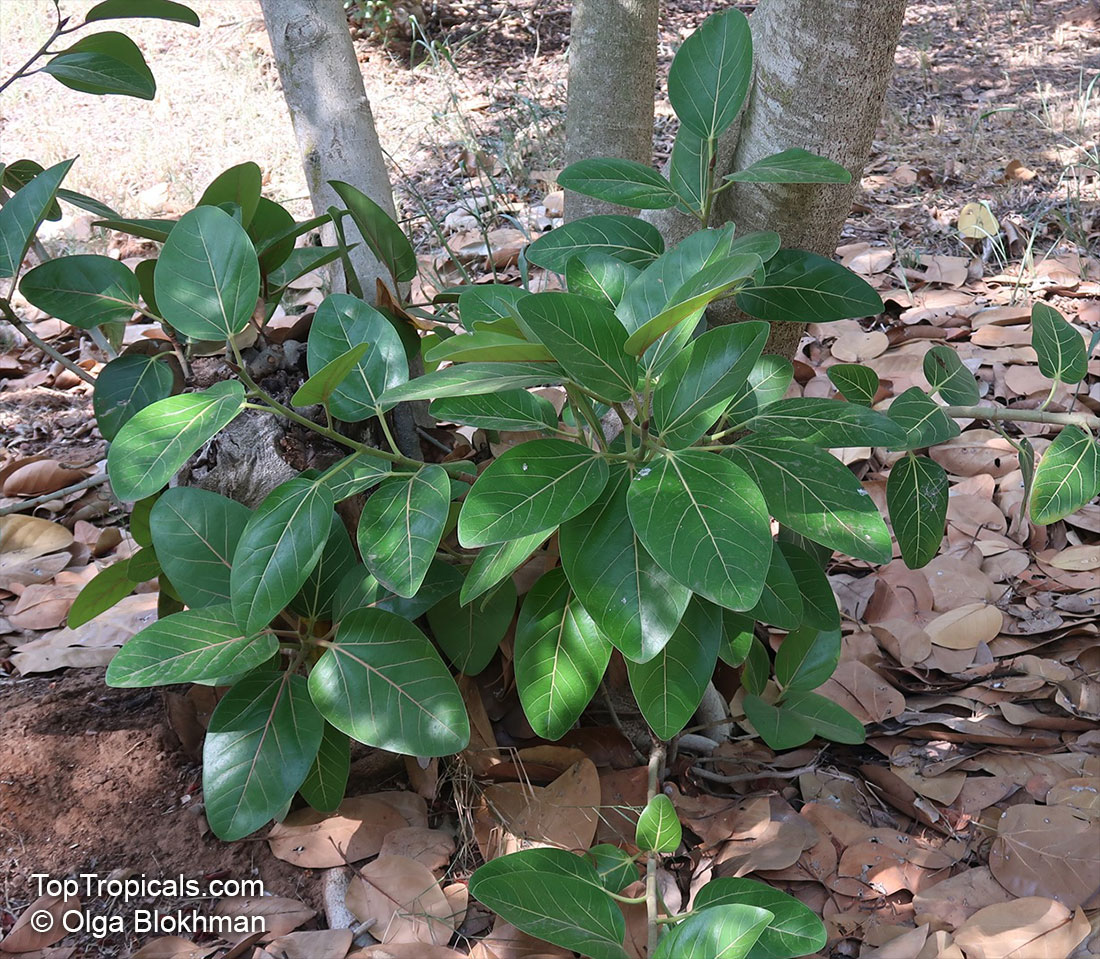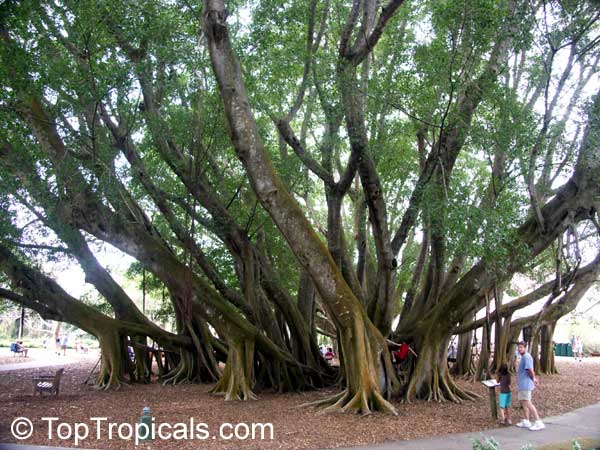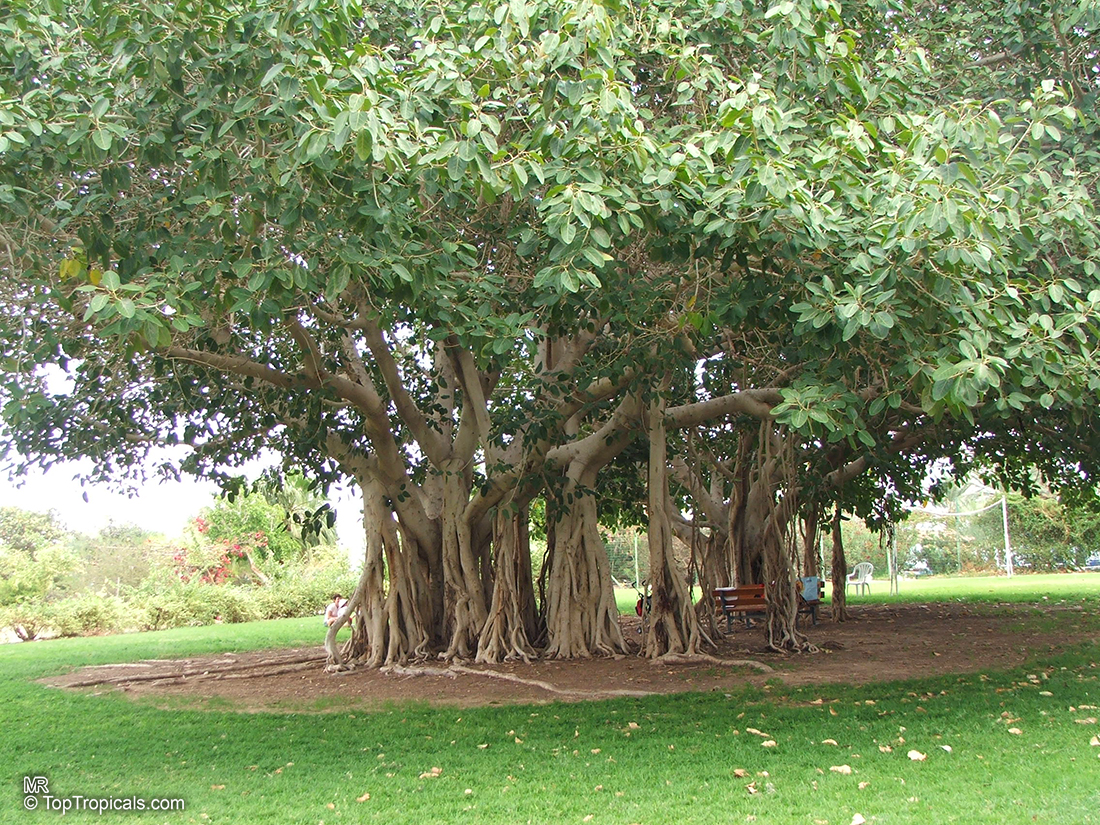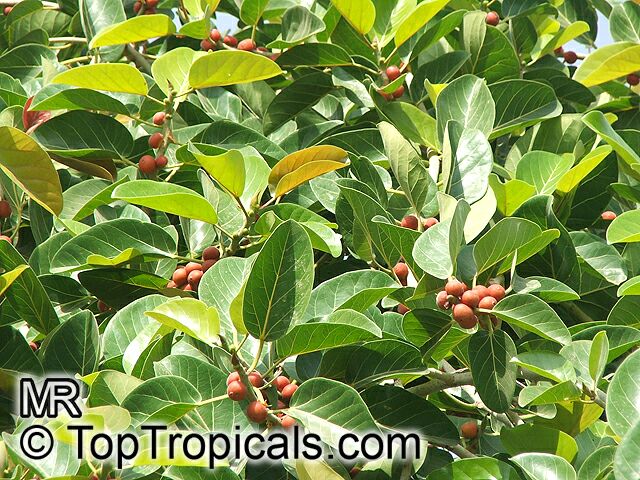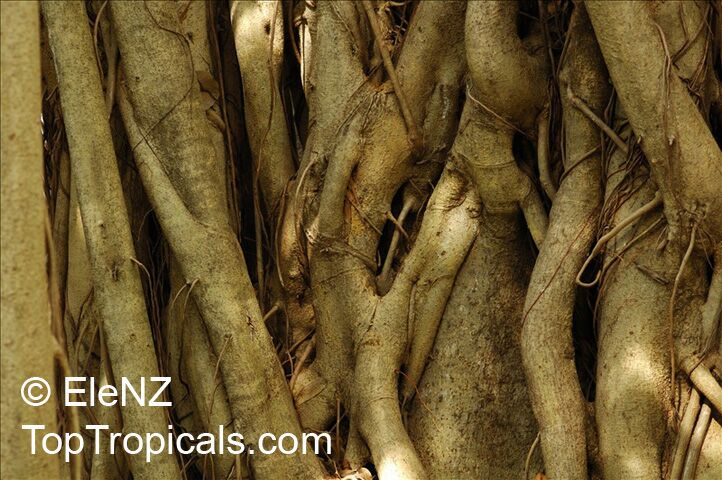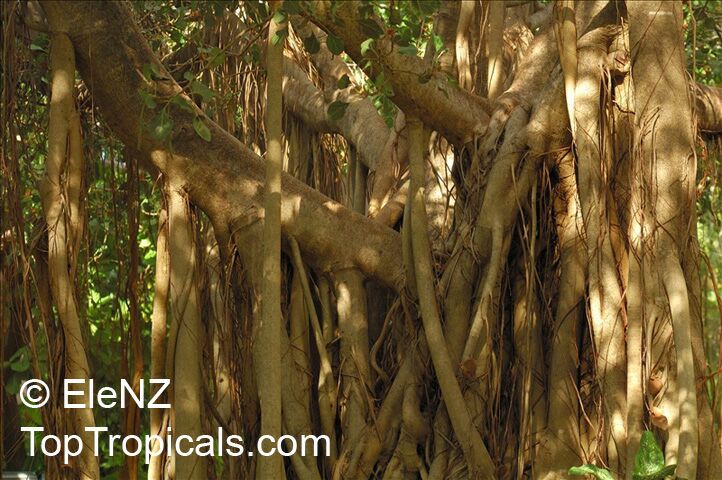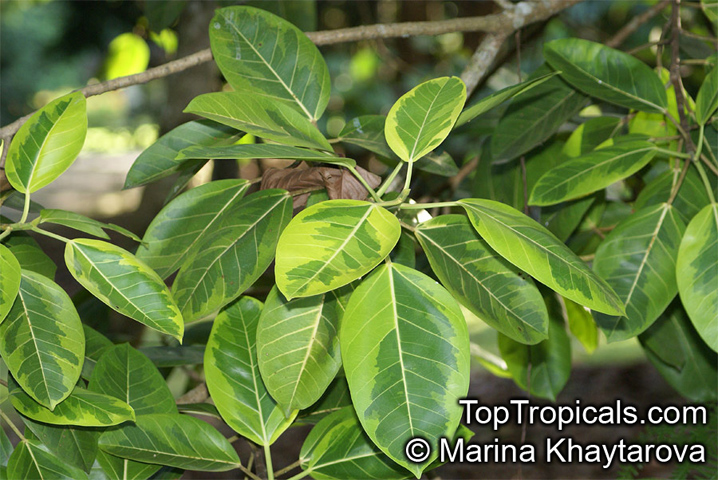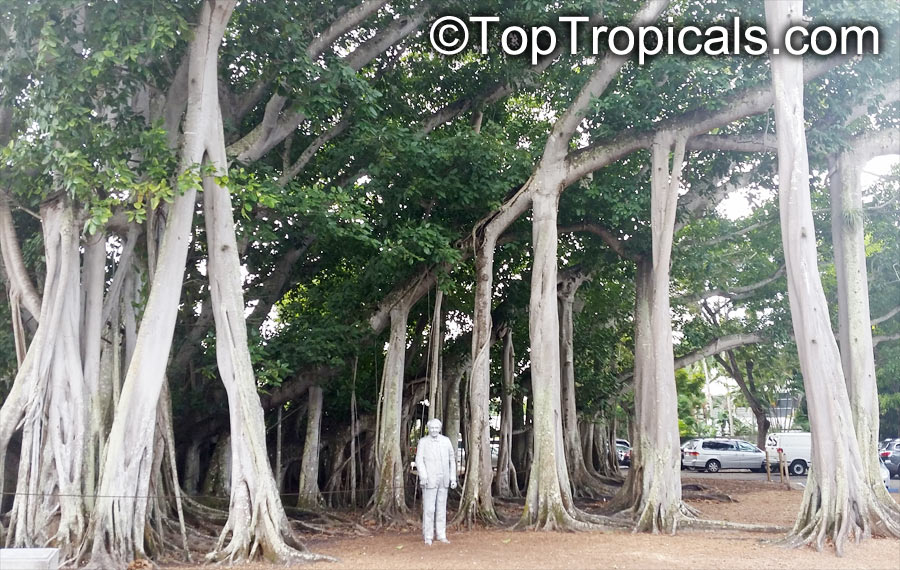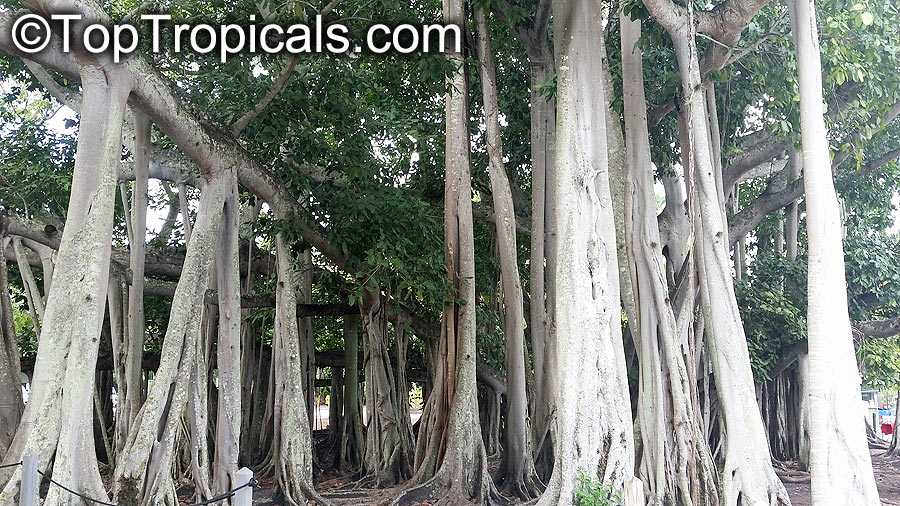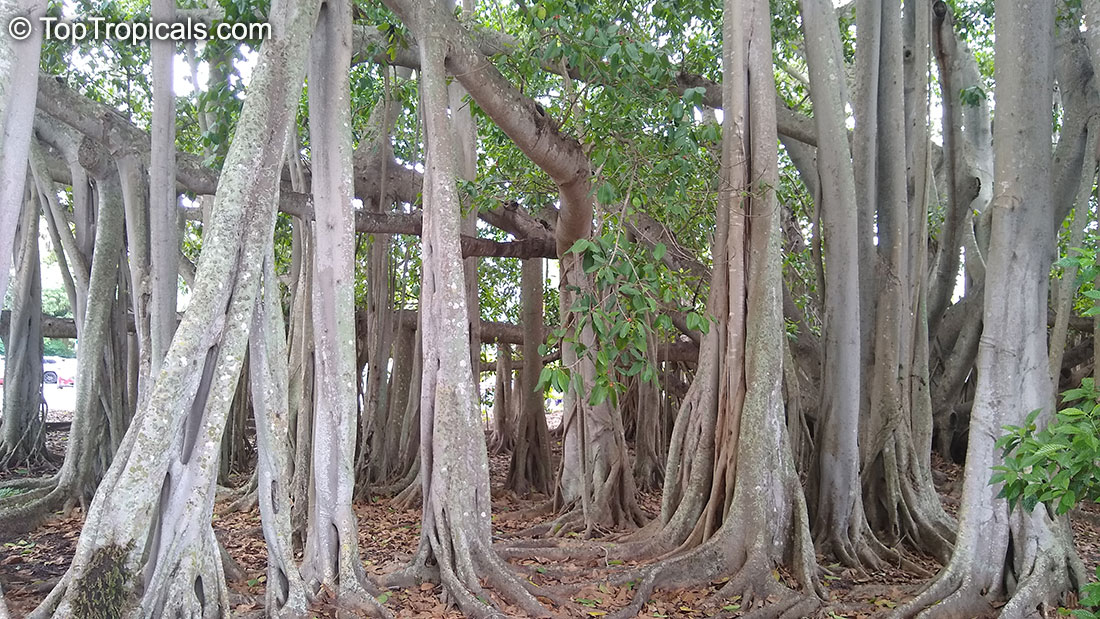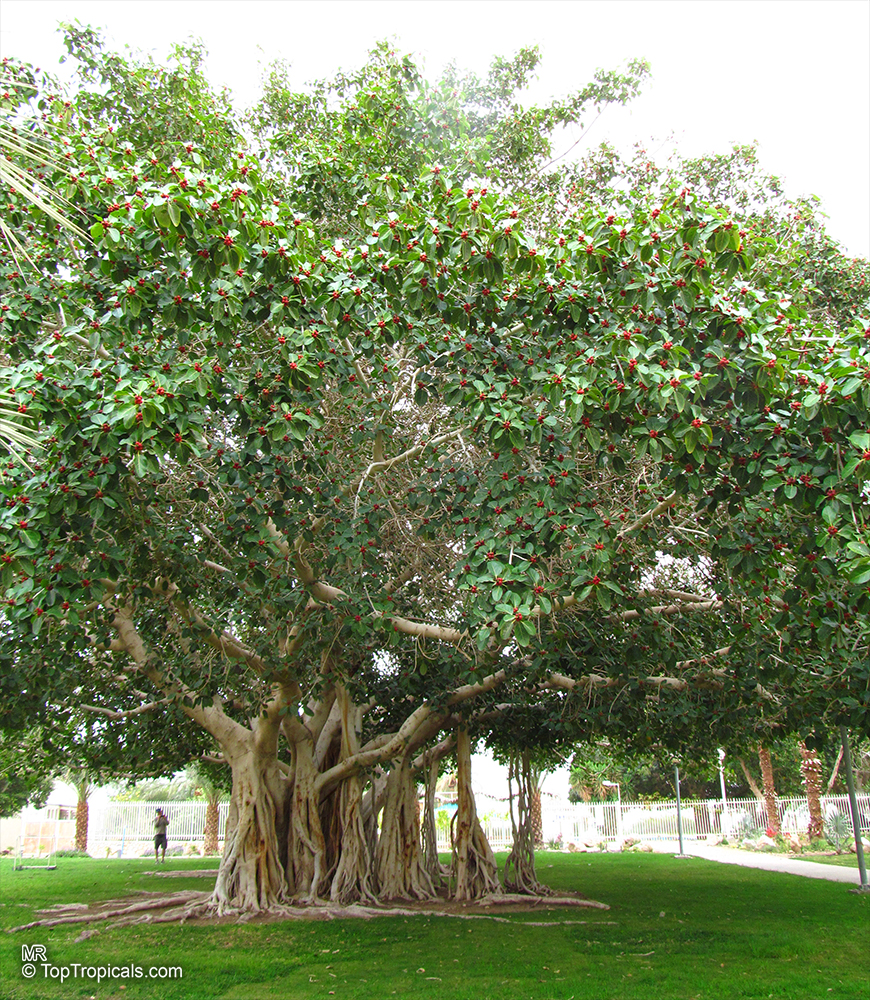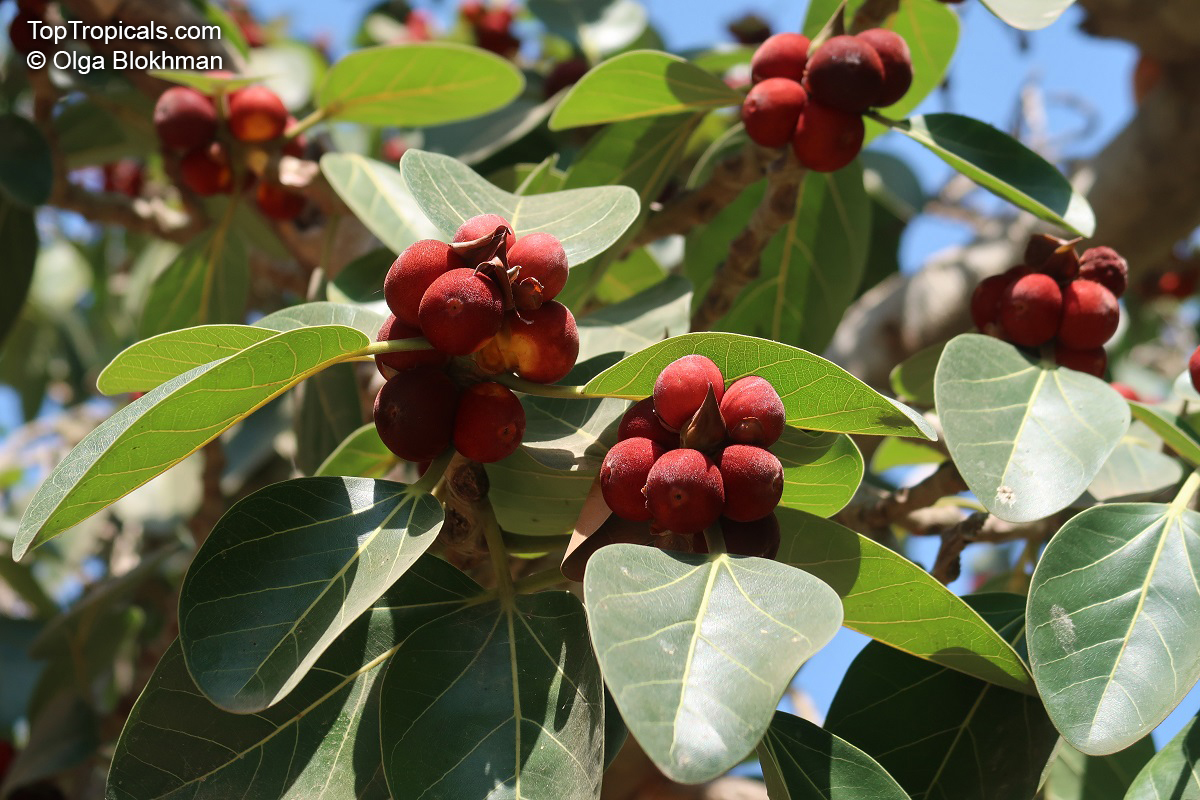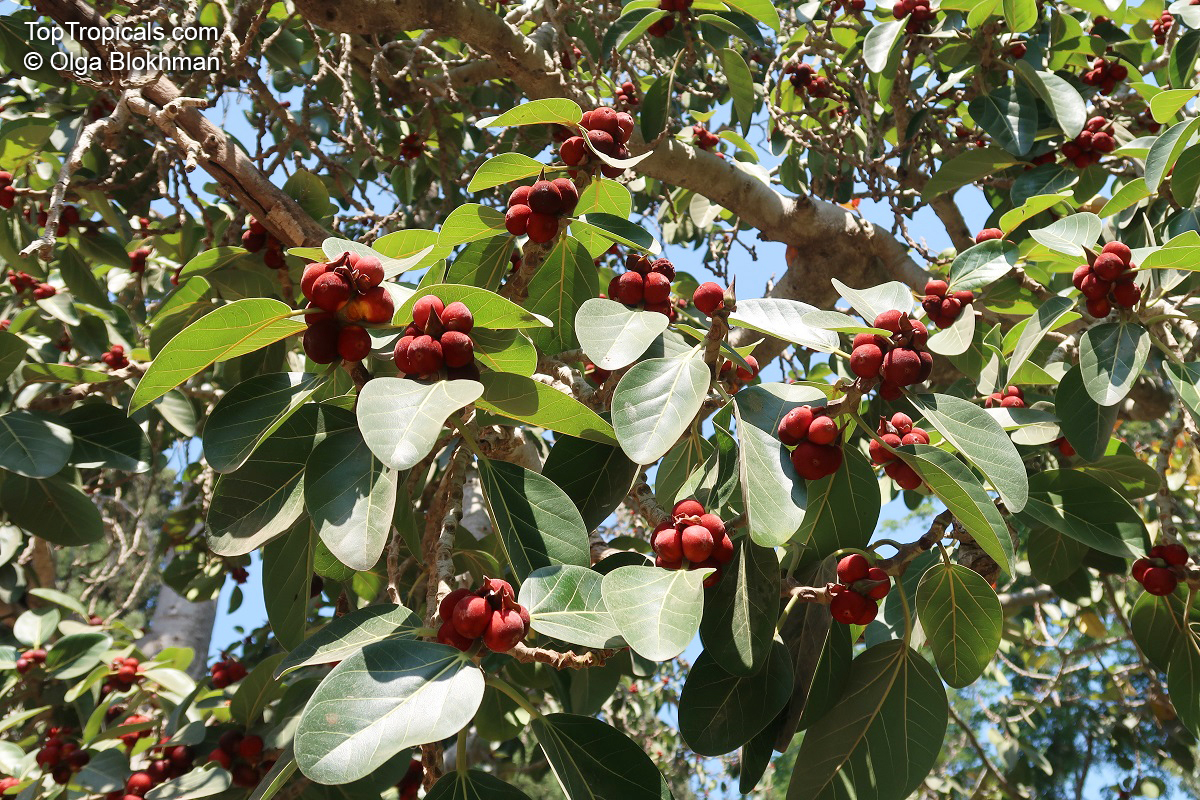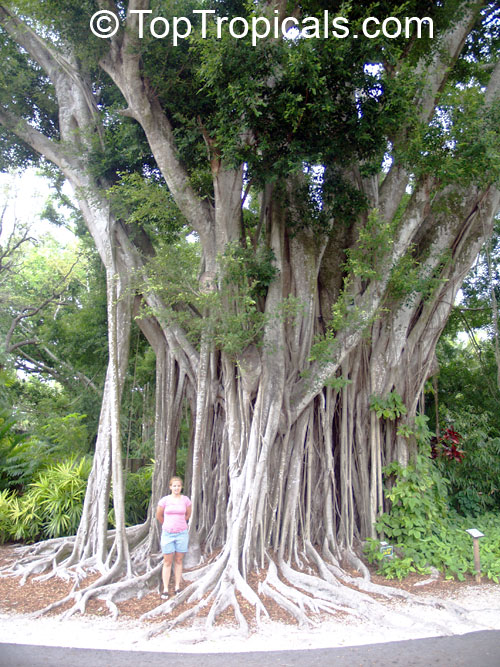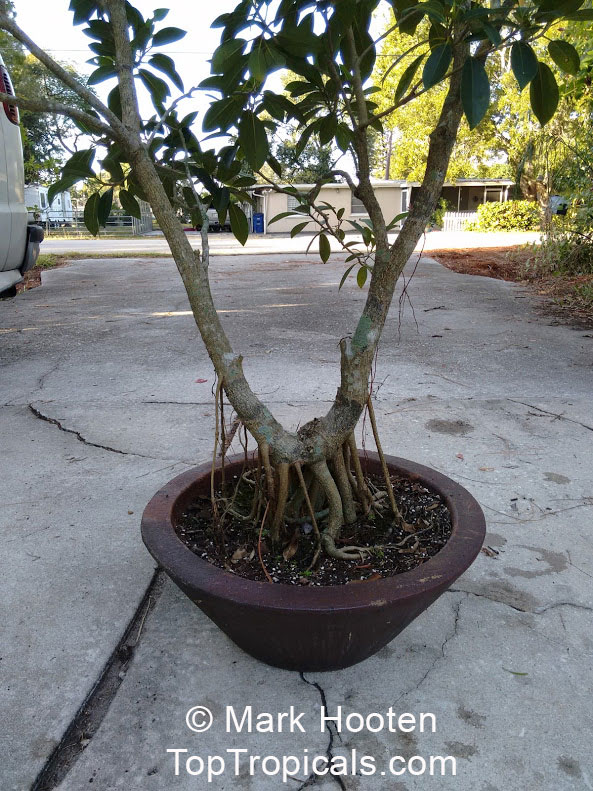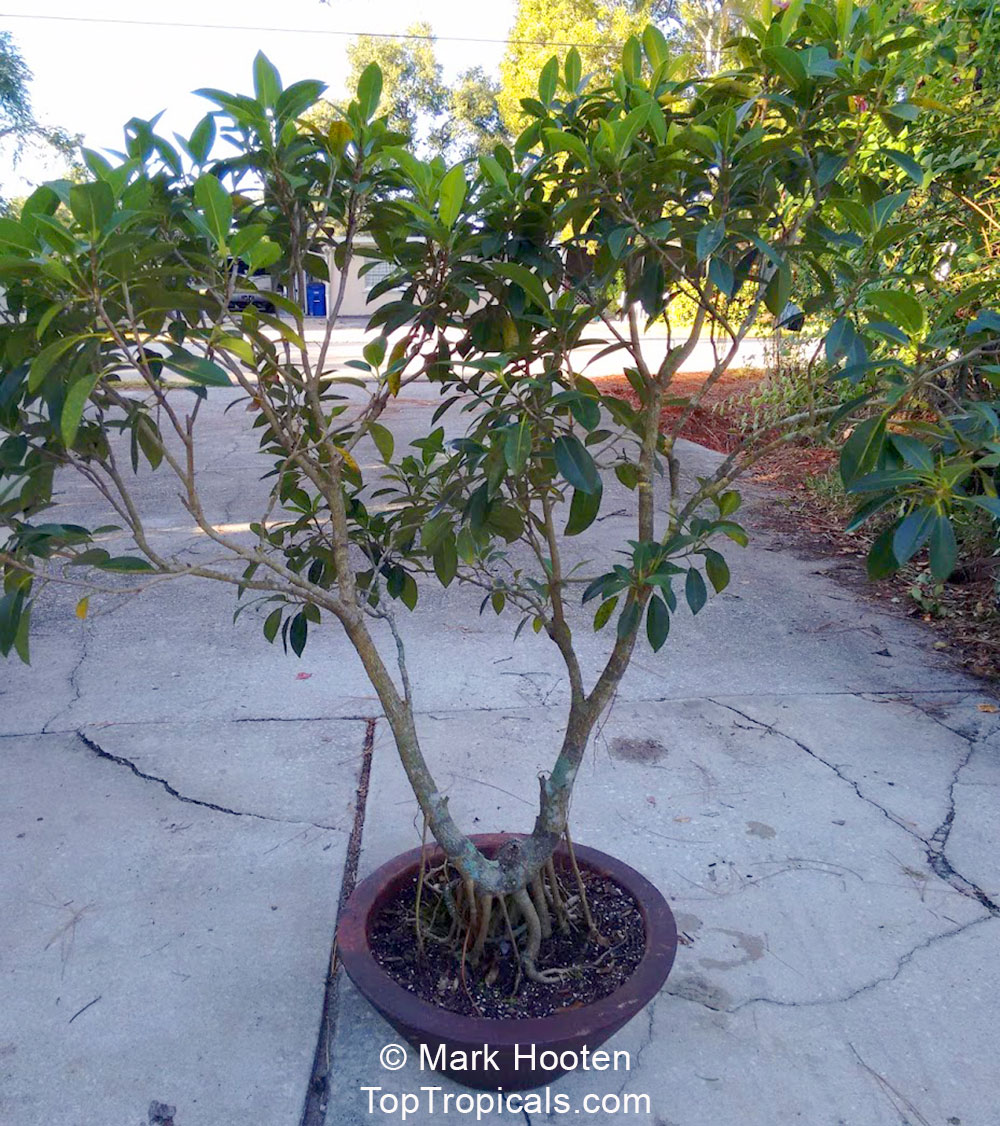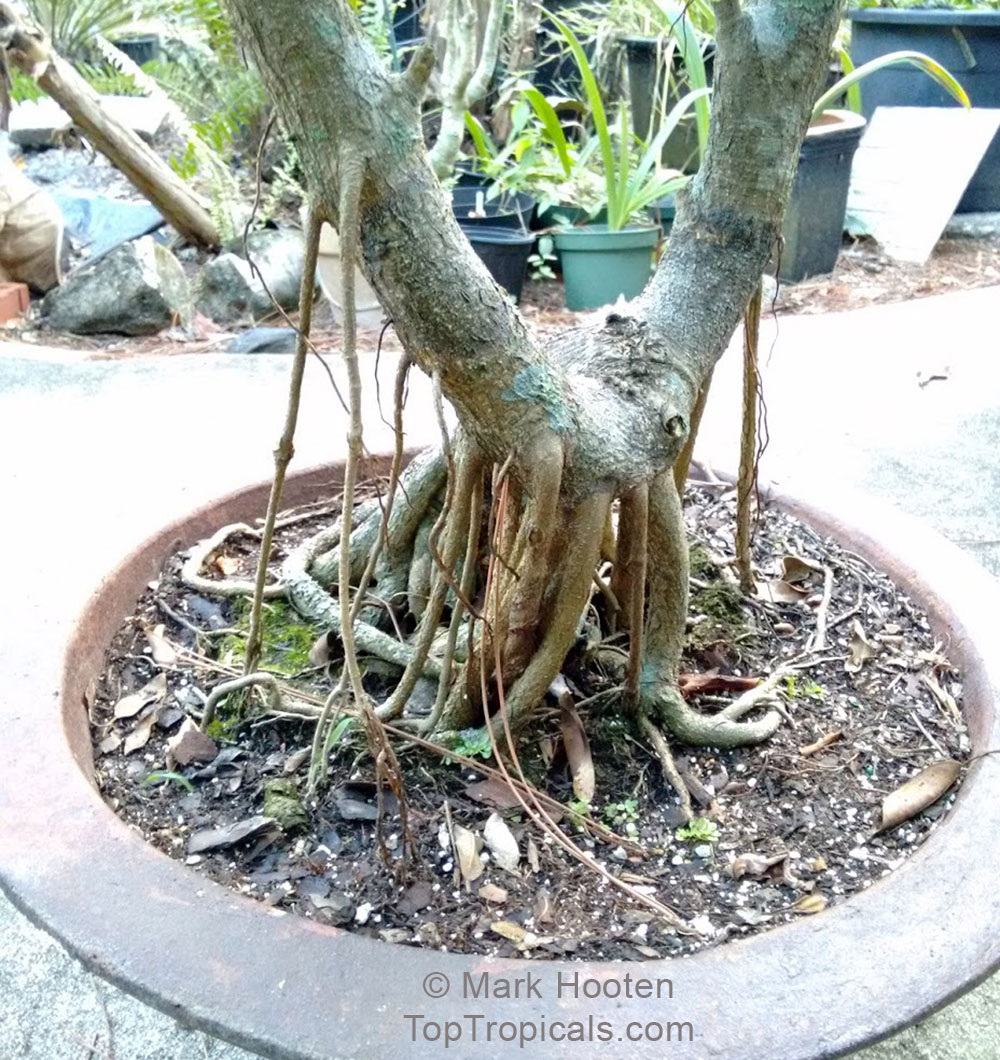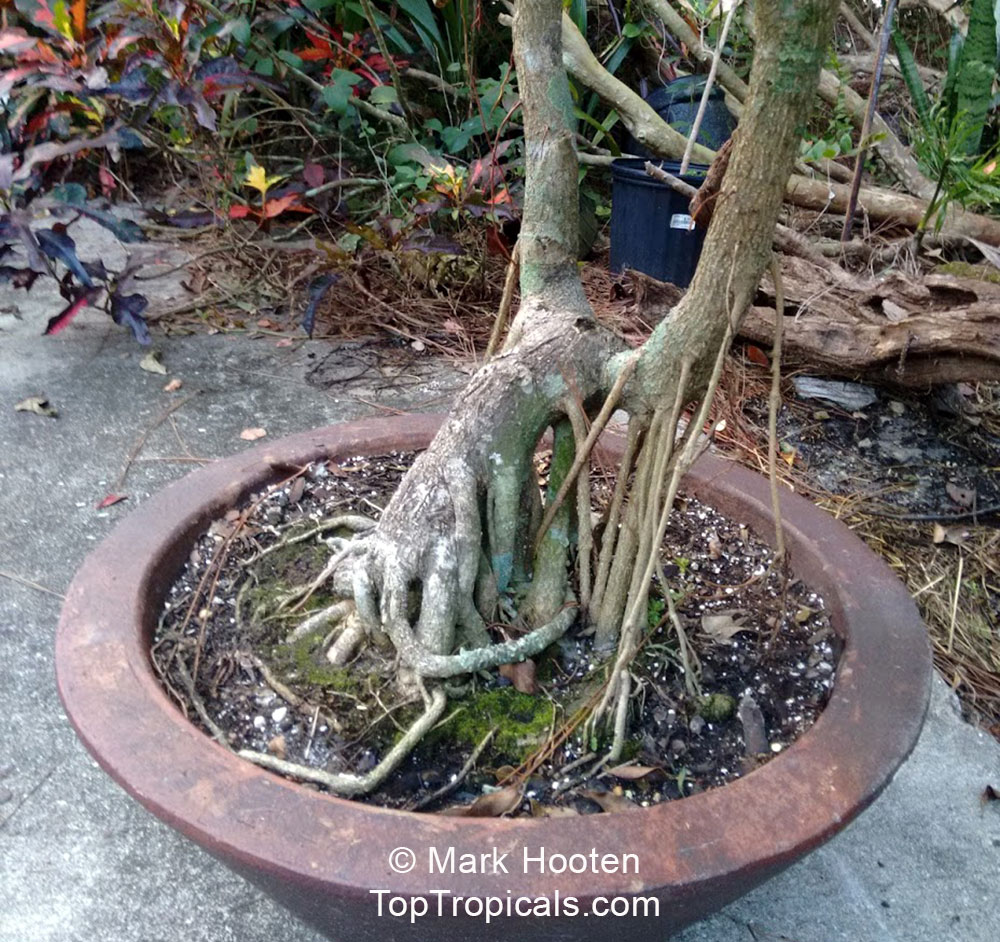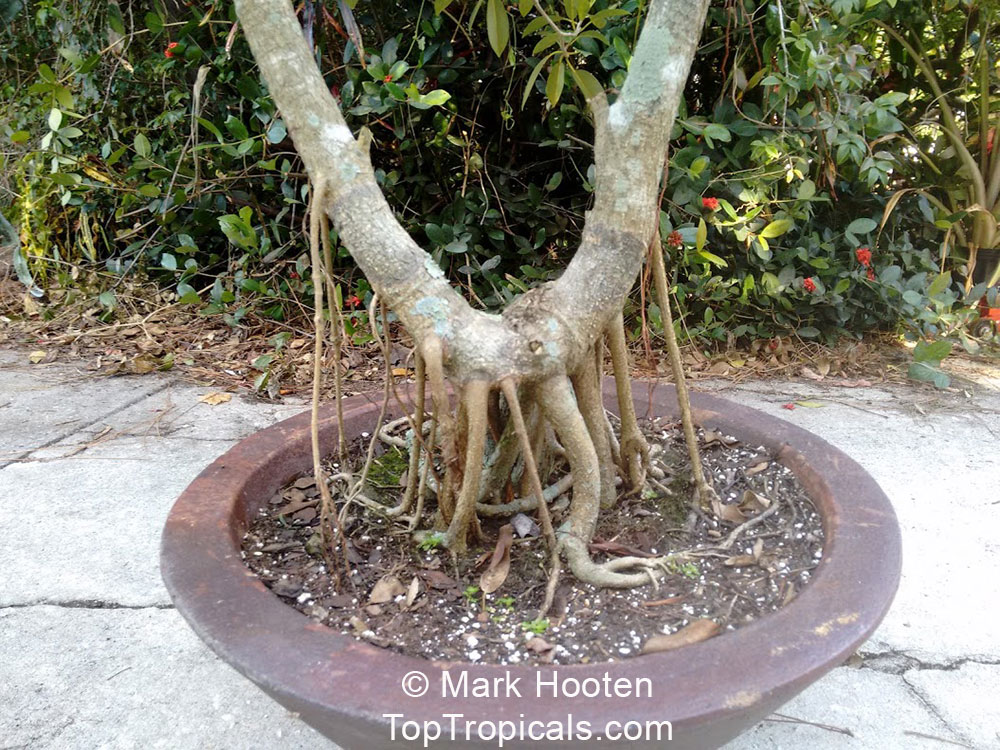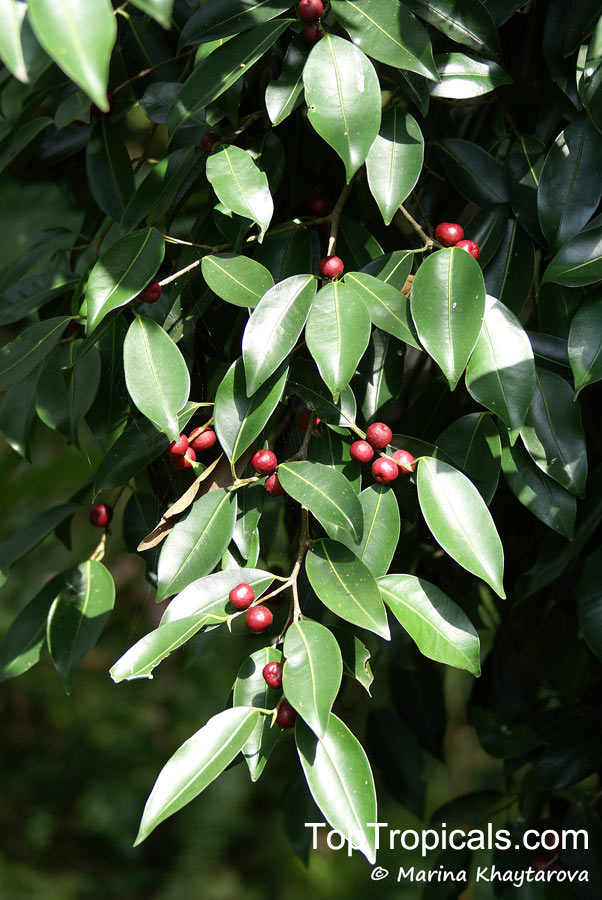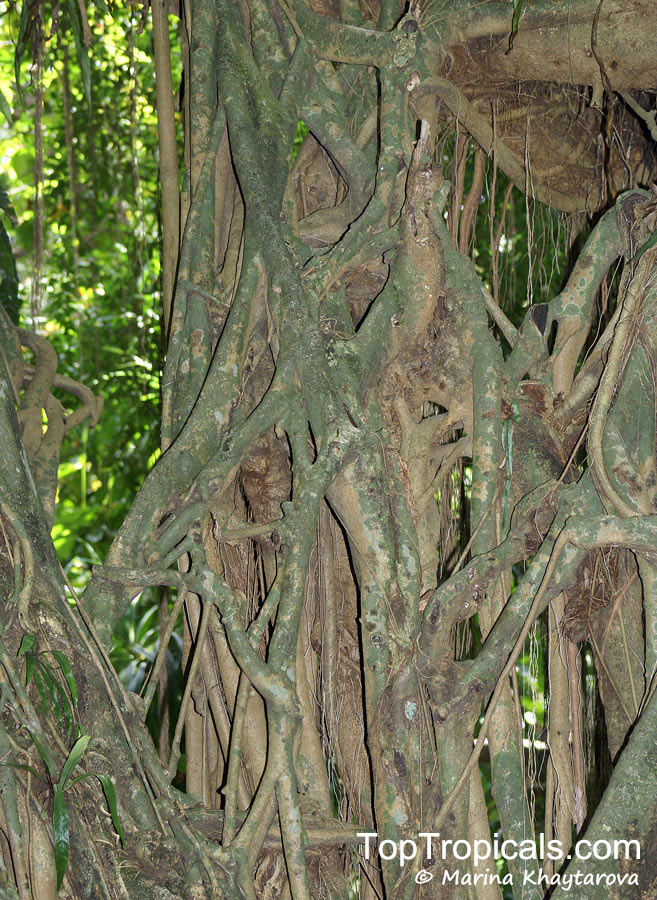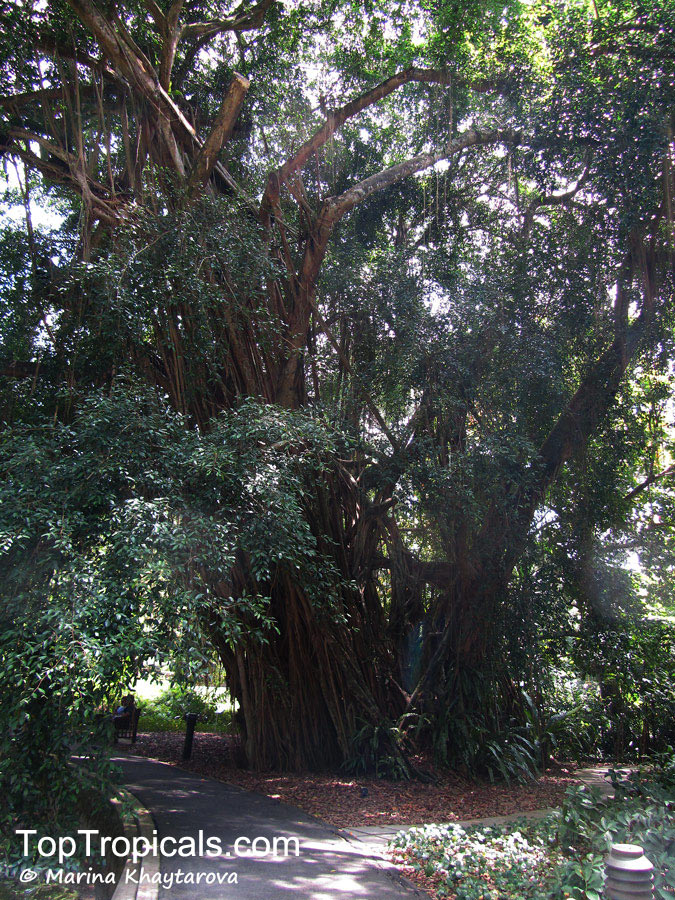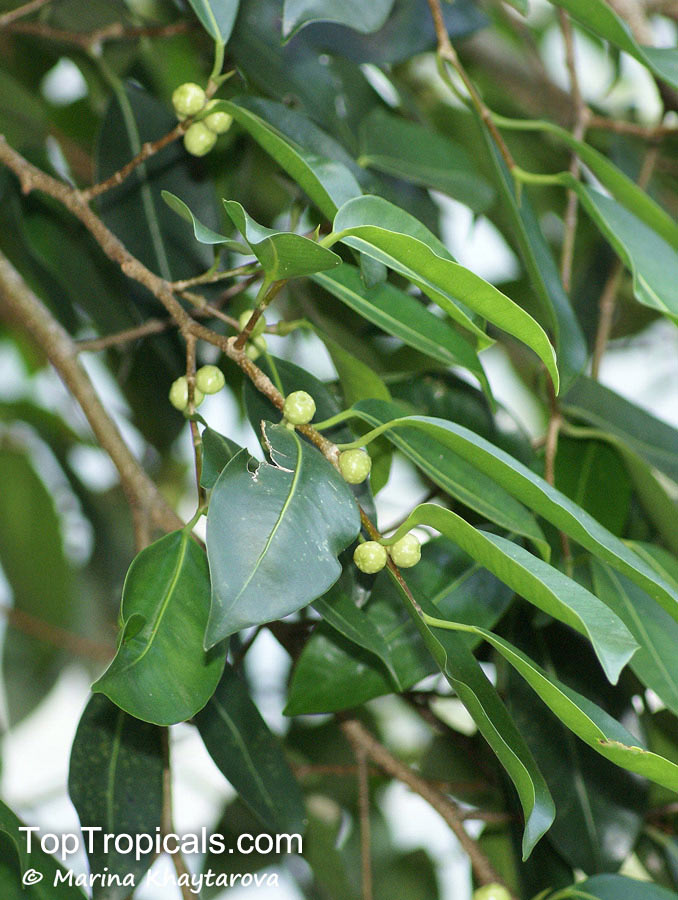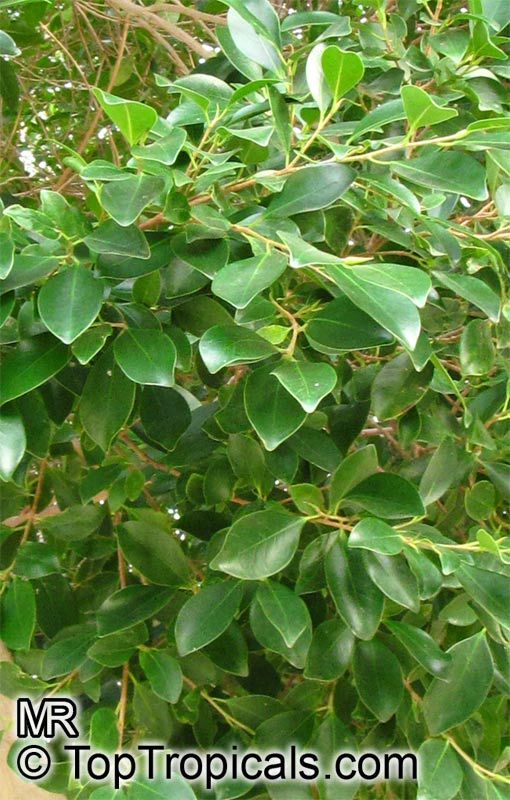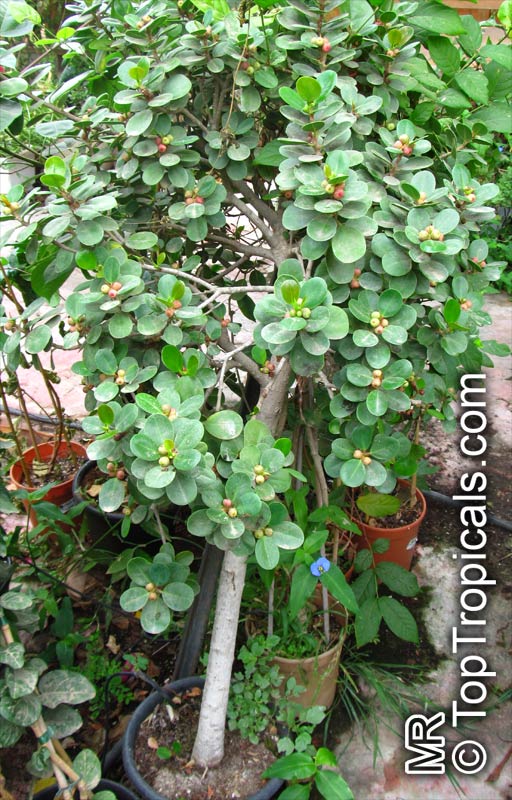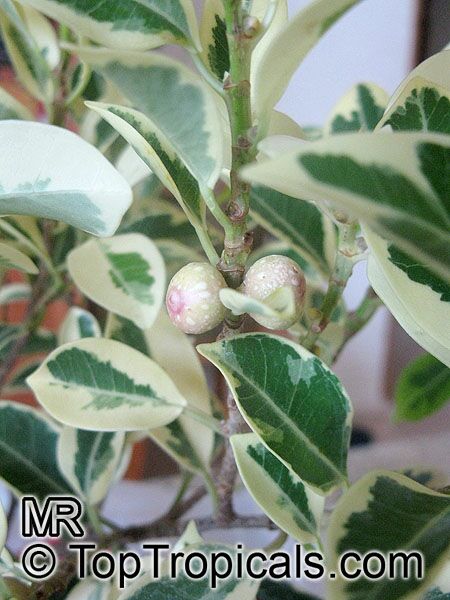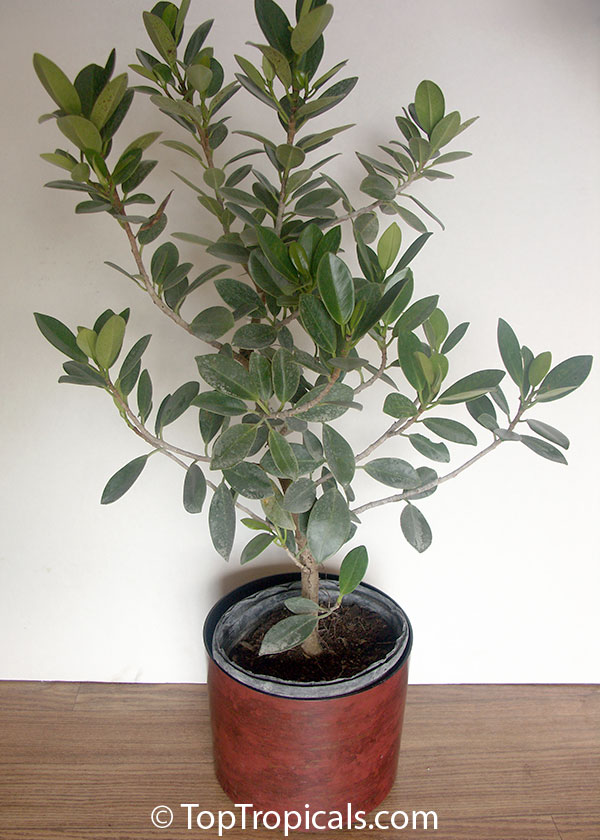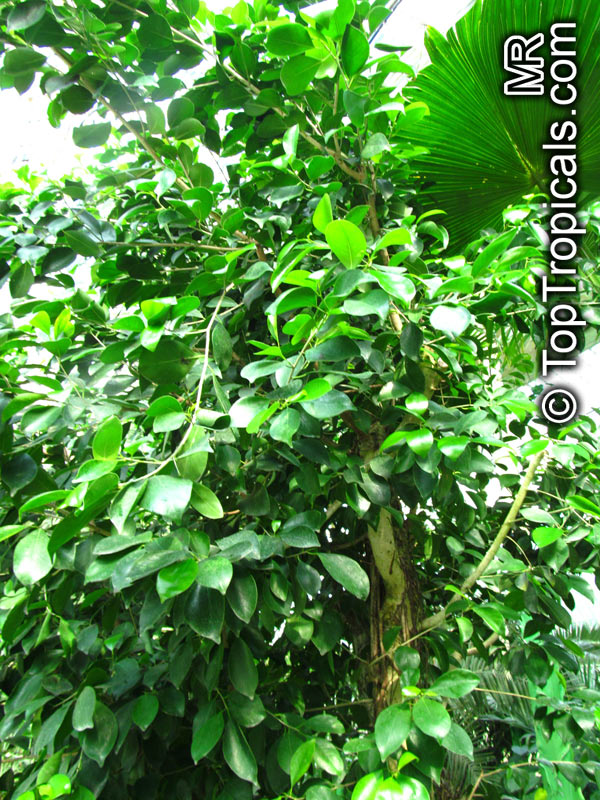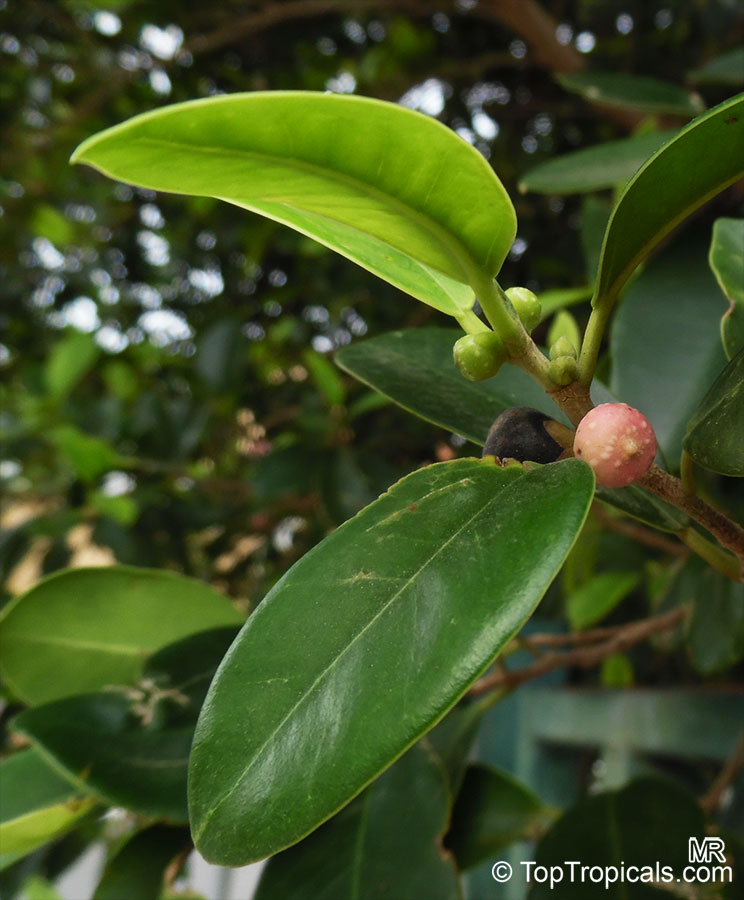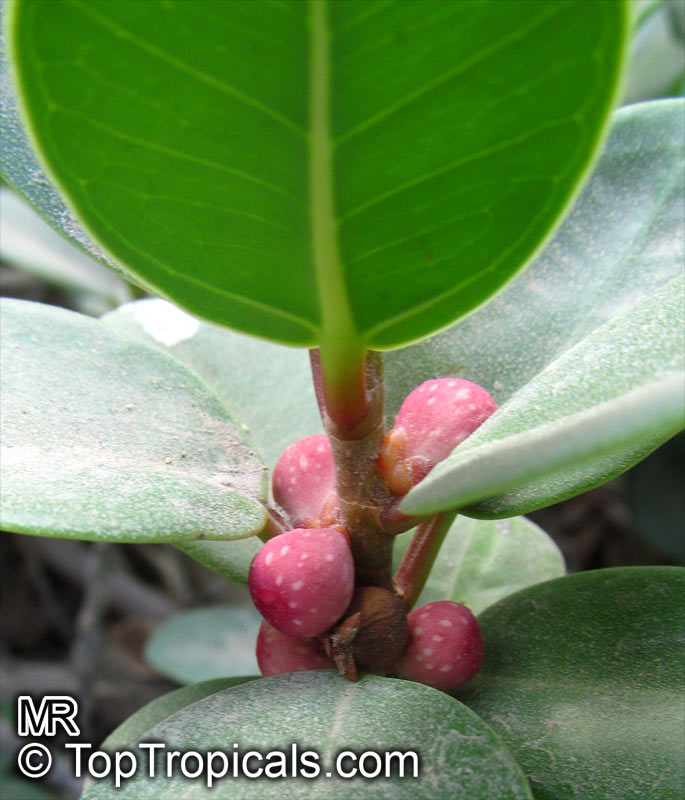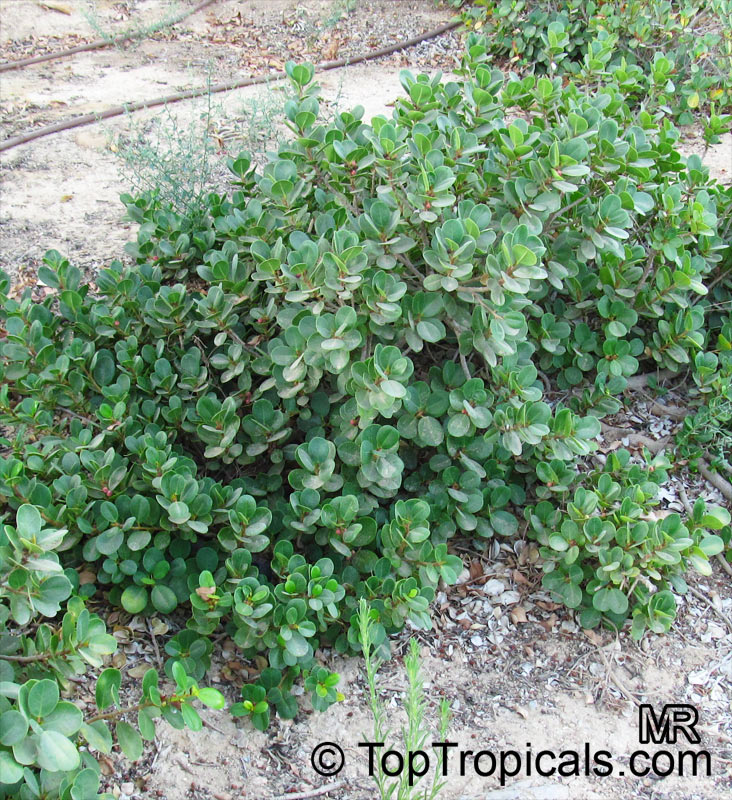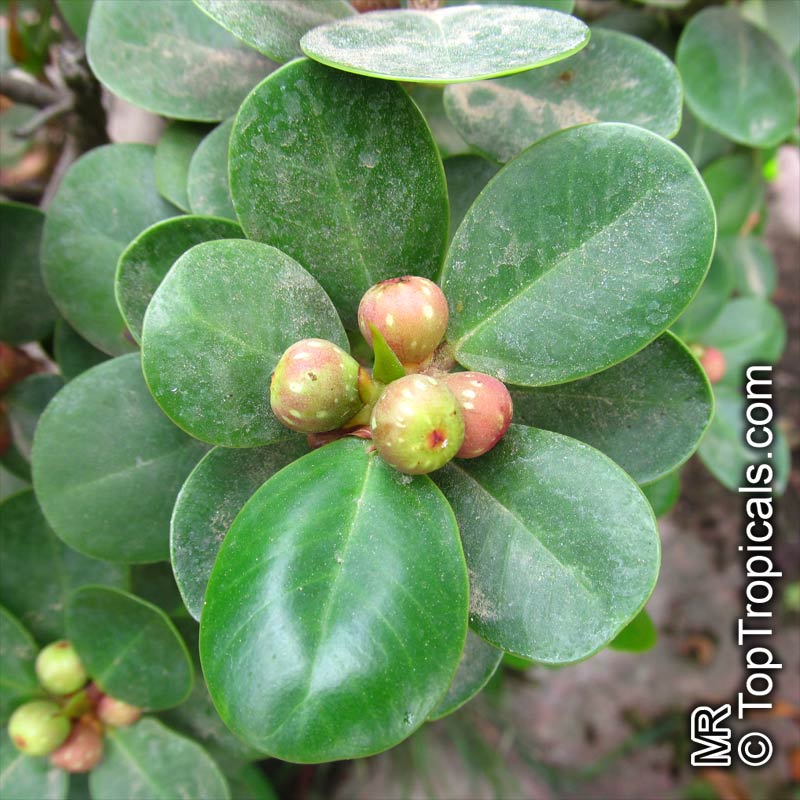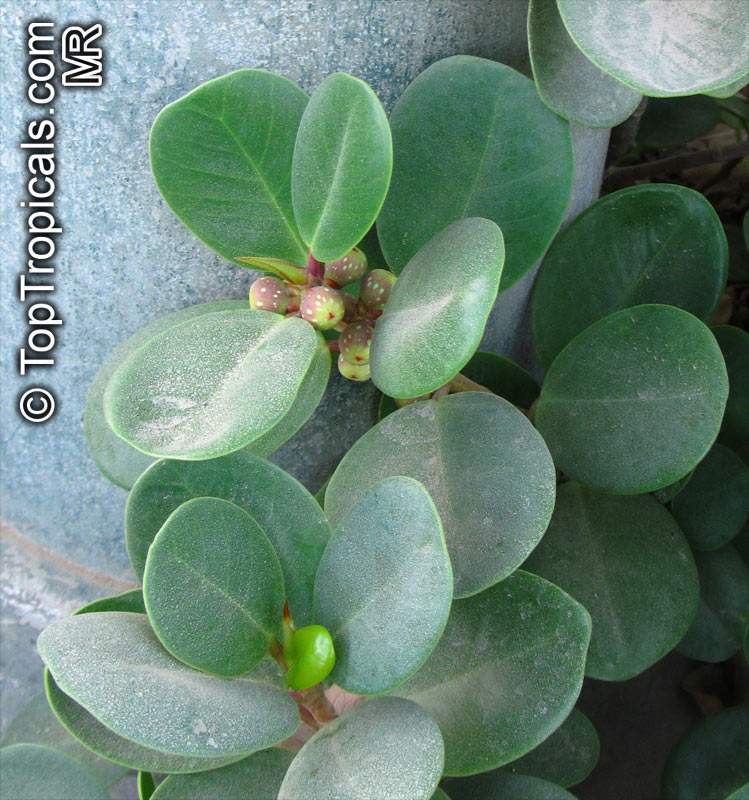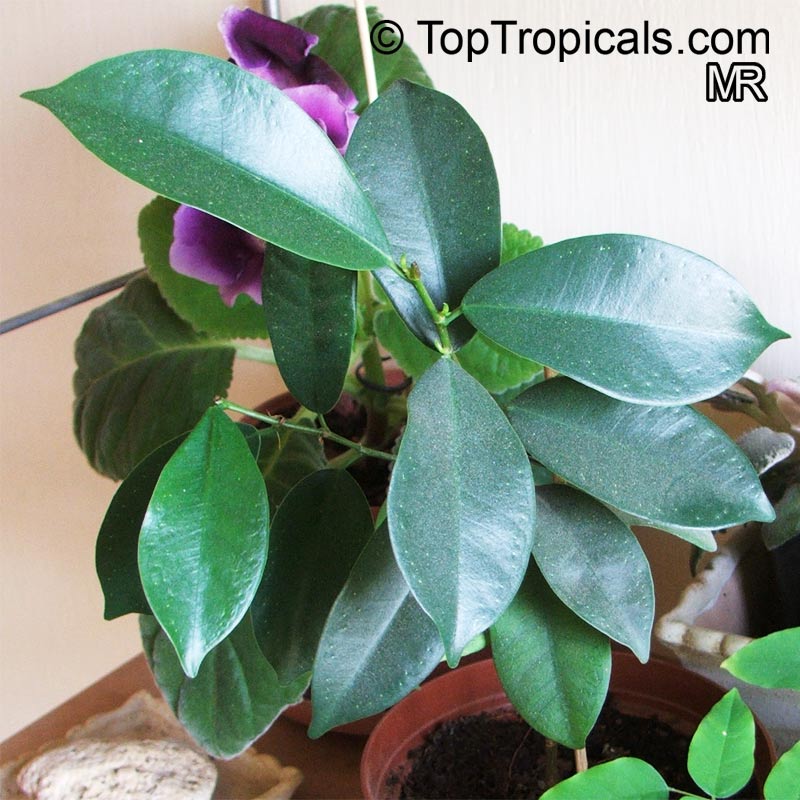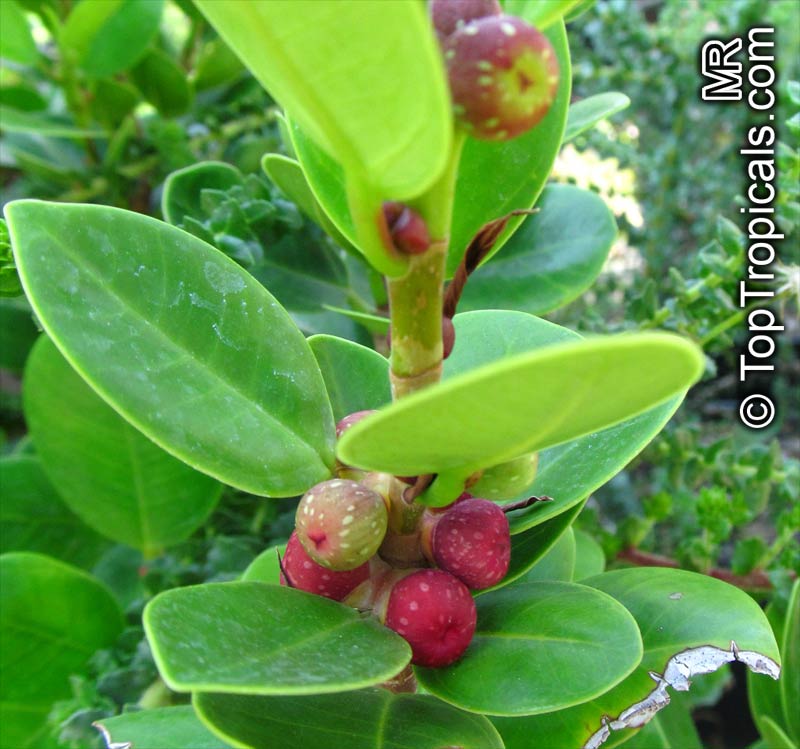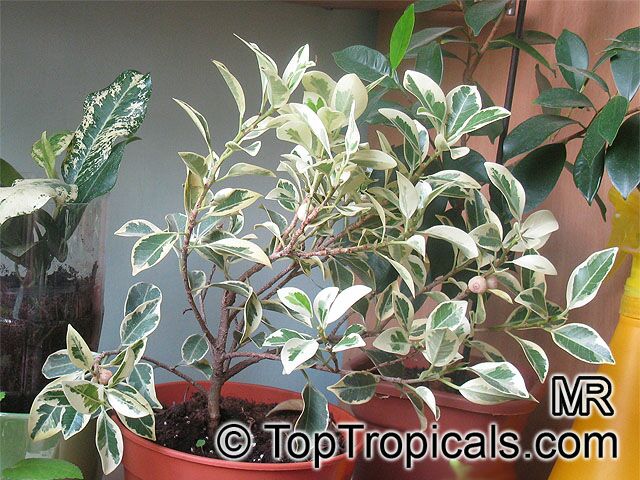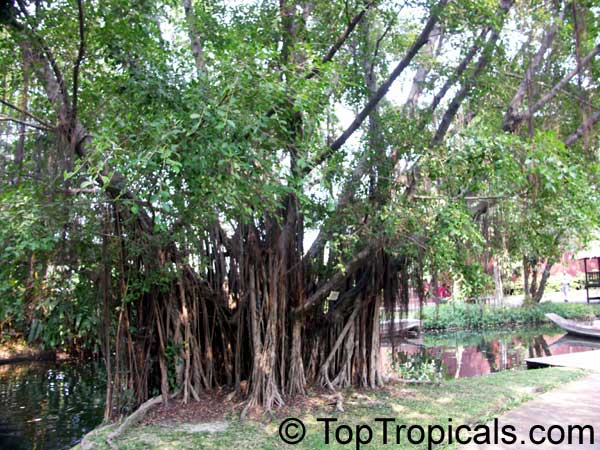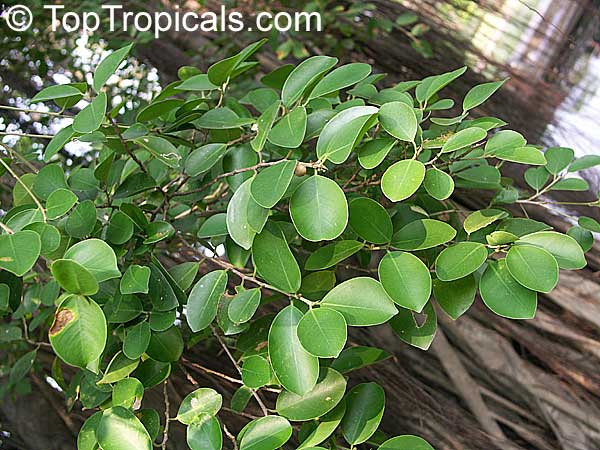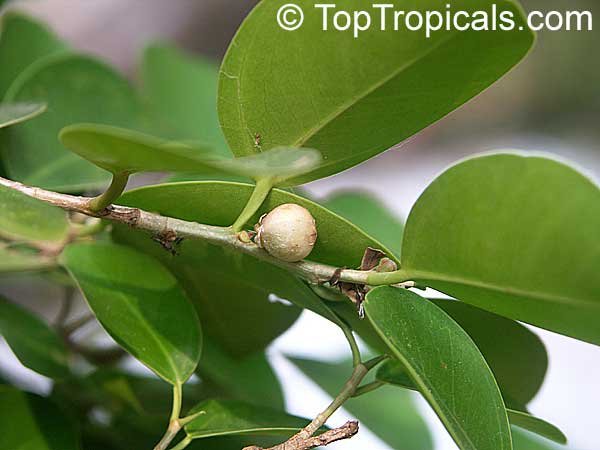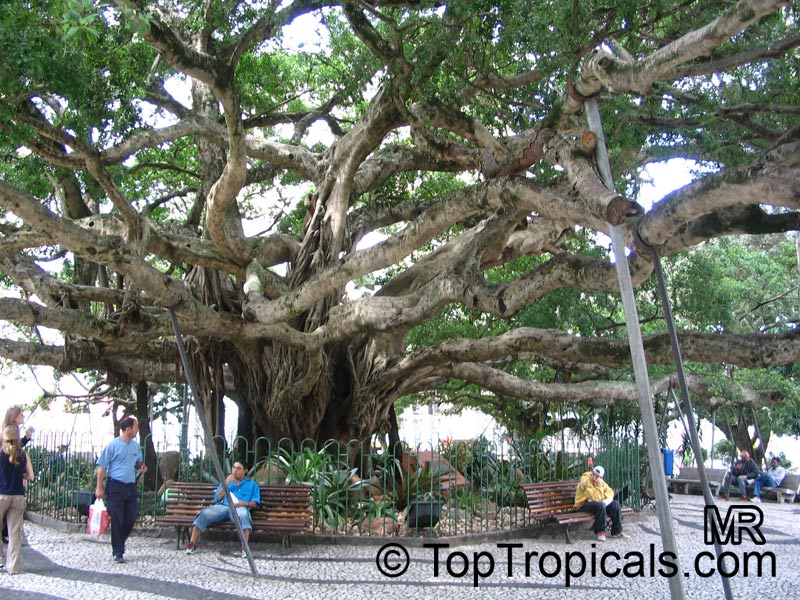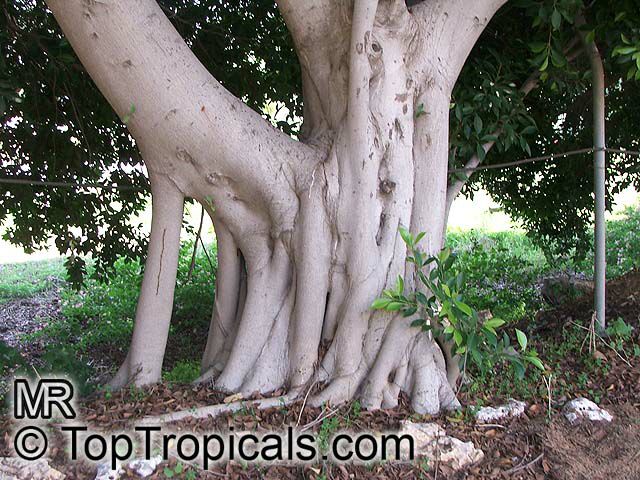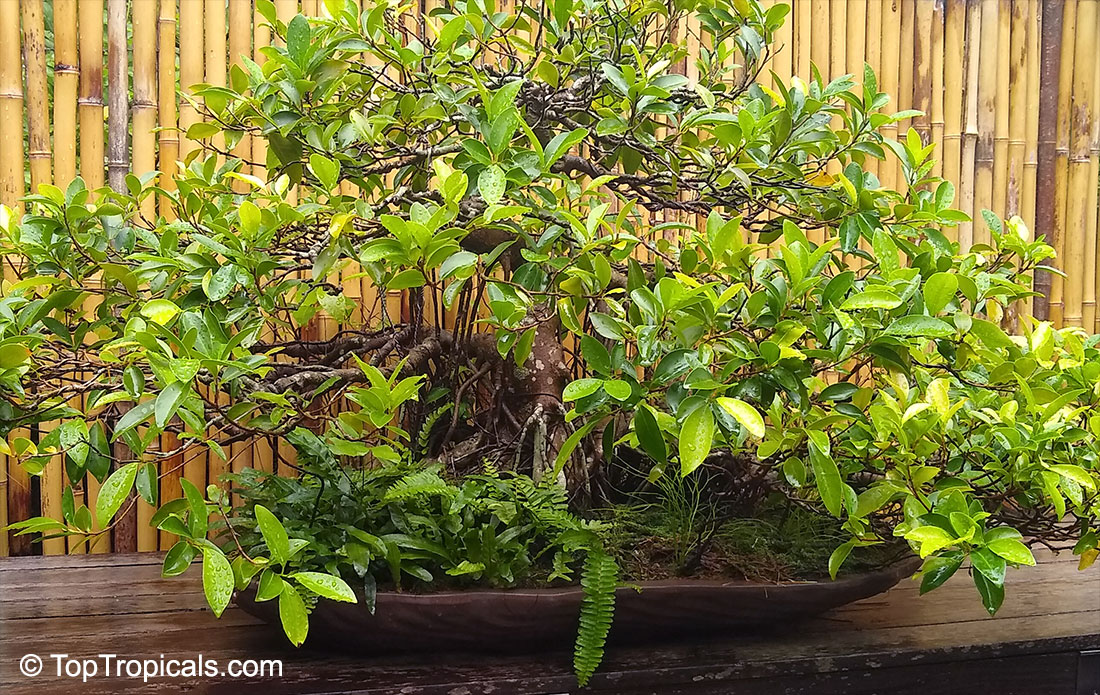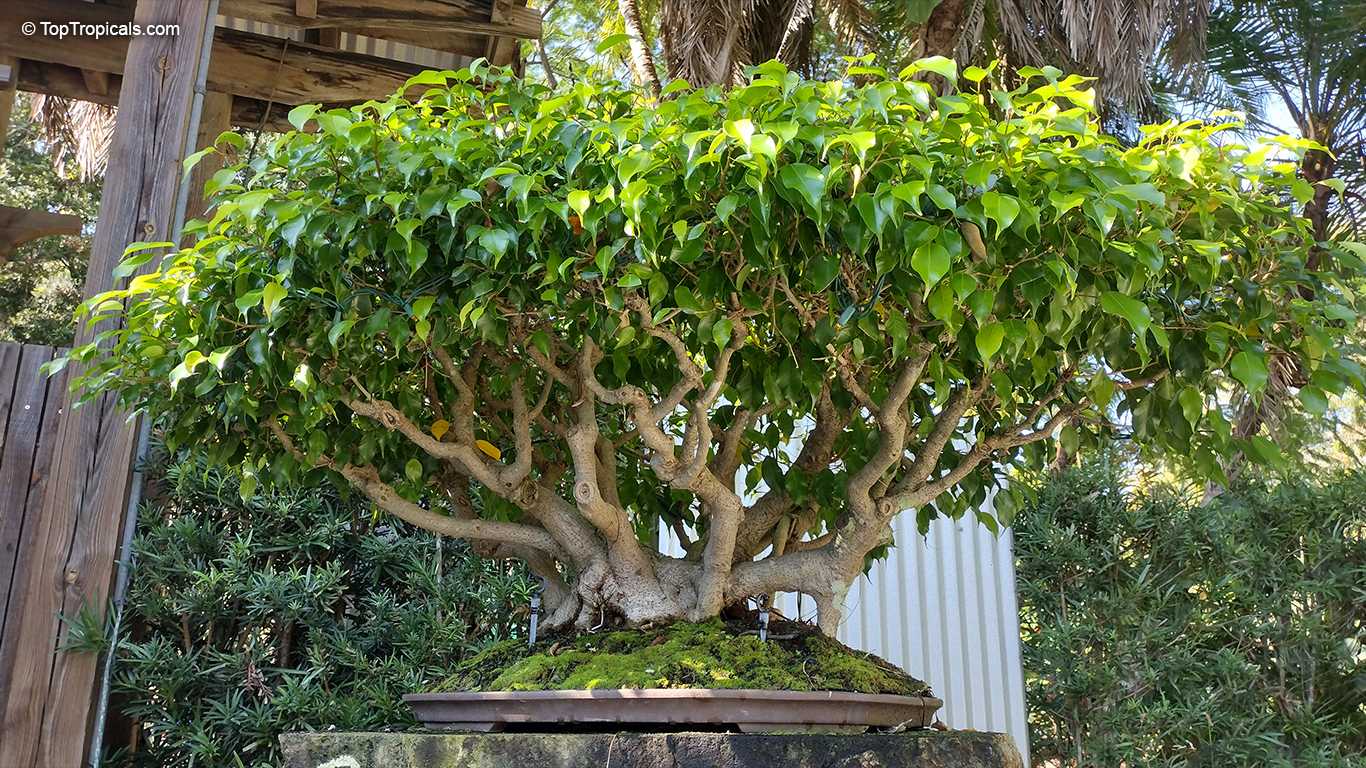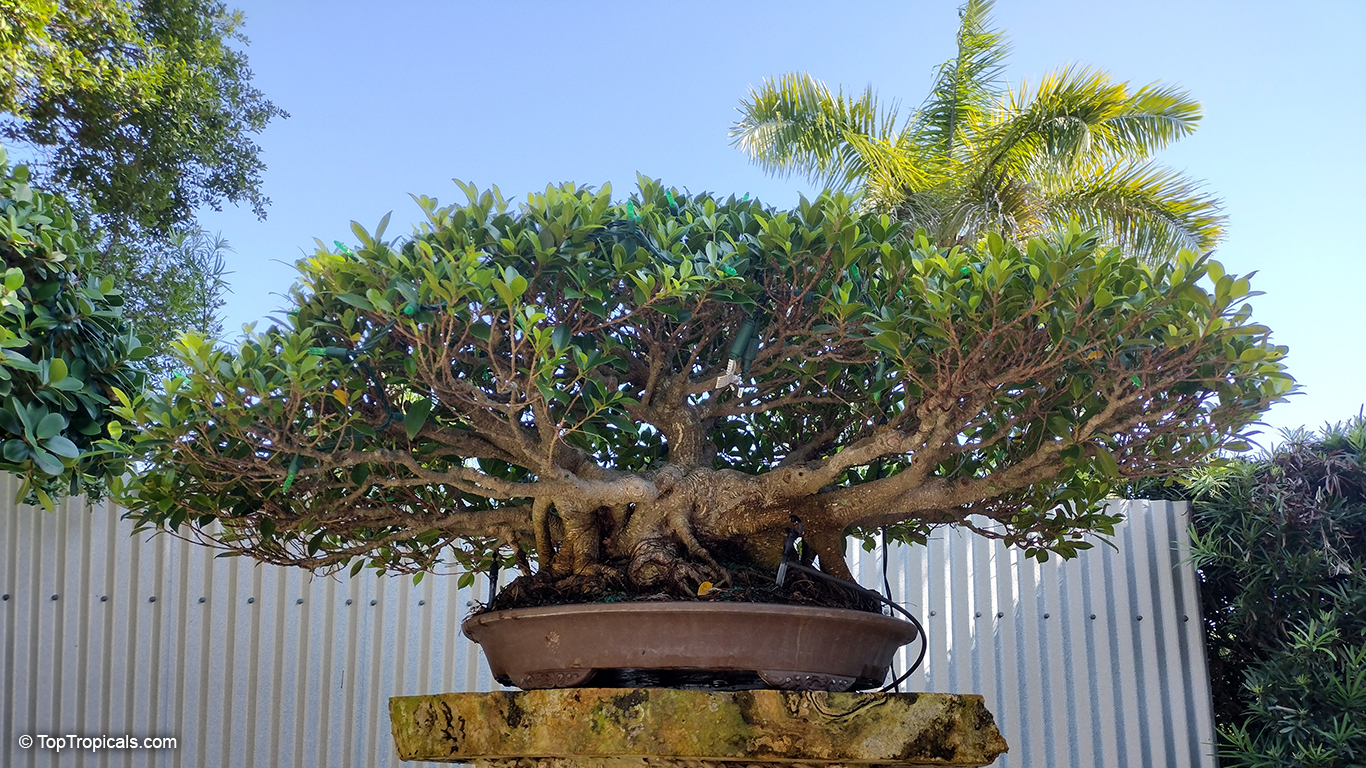Banyan - Plant Encyclopedia Results
Top Tropicals Plant Encyclopedia
| Number of plants found: 4 |
Botanical names: Ficus benghalensis, Ficus indica
Common name: Banyan Tree
Family: Moraceae
Origin: South Asia






Very large, fast growing, evergreen tree up to 10ft, with spreading branches and many aerial roots. Leaves stalked, ovate-cordate, 3 nerved, when young downy on both sides; petiole with a broad smooth greasy gland at the apex, compressed, downy. Fruit in axillary pairs, the size of a cherry, round and downy. The Indian Banyan is the most famous banyan. In India, an entire army camped under a single giant old tree. Various parts of this plant are considered medicinal. The bark of this therapeutically valuable tree is attributed with tonic, astringent,cooling and diuretic properties in Ayurveda.
Botanical name: Ficus citrifolia
Common names: Shortleaf Fig, Florida Banyan, Giant Bearded Fig, Wild Banyantree, Wimba Tree
Family: Moraceae
Origin: Central America







Ficus citrifolia can grow up to 18 metres tall. The bole can be 75cm in diameter The plant often begins life as an epiphyte, growing in the branch of another tree; as it grows older it sends down aerial roots which, when they reach the ground quickly form roots and become much thicker and more vigorous. They supply nutrients to the fig, allowing it to grow faster than the host tree.
The roundish fruit is greenish, often brown dotted, turning reddish and brownish at maturity, about 10mm in diameter. Fleshy, but with very little flavor.
See articleabout Ficus citrifolia by Mark Hooten
Botanical names: Ficus microcarpa, Ficus nitida, Ficus retusa
Common names: Chinese banyan, Indian Laurel
Family: Moraceae
Origin: Many Tropical regions Of the World





The pollinator wasp has been introduced to a number of places where the tree is cultivated, including Hawai'i, allowing this species to spread beyond initial plantings. Tiny seeds within small sized fruit are ingested by many fruit eating animals, such as birds. Seeds are capable of germinating and growing almost anywhere they land, even in cracks in concrete or in the crotch of other trees. The small seedling begins to grow on its host, sending down aerial roots, and eventually strangling and replacing the host tree or structure. F. microcarpa grows to about 60 feet in the wild, but it is easily trained as a bonsai. The bark is a smooth gray with a lot of aerial roots if you make sure it gets a lot of humidity. If you are growing them somewhere that has a lot of humidity never let the aerial roots grow out of the pot and into the ground. If this happens it will cause the bonsai to put out a rapid growth of branches and become a bush. Foliage is dark green and quite dense and grows upright. Retusa grow best in full sun with plenty of water. Fertilize with an organic or all purpose fertilizer every week. To prevent die back, prune only when the tree is actively growing. With terminal pruning the reuse will bud back easily. The milky white latex that is secreted when pruning branches may cause an allergic reaction to some people, so it is best to avoid contact with the skin.
Use link to repeat this search:
https://toptropicals.com/cgi-bin/garden_catalog/cat.cgi?find=Banyan&search_op=and&keyword_op=and&language=e&number=10
&no_change_lang=1&user=tt&sale=1&first=0
